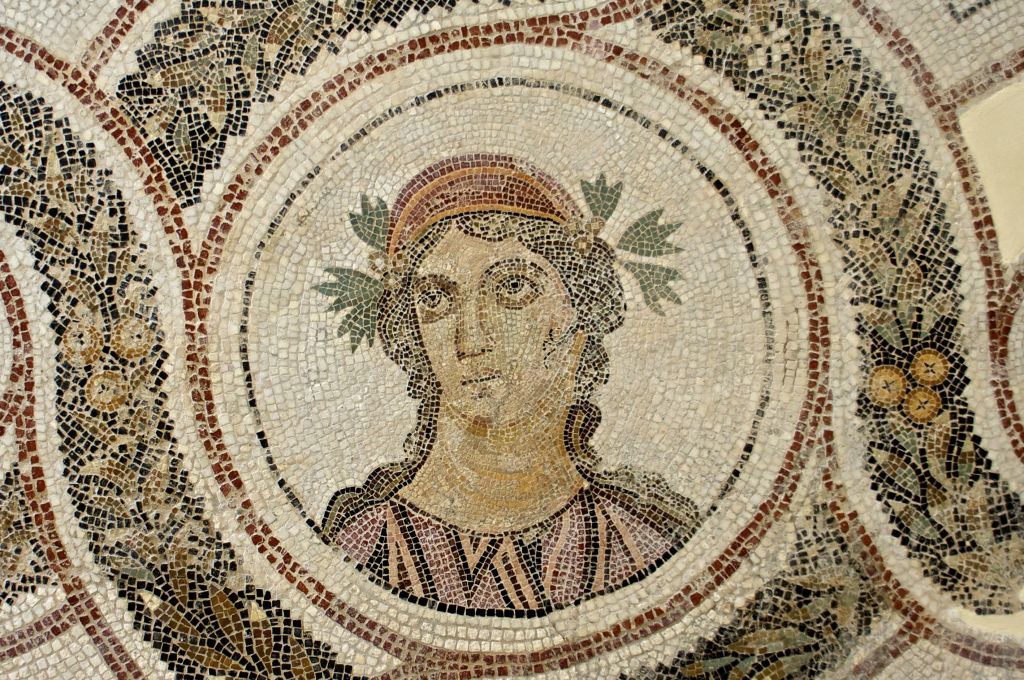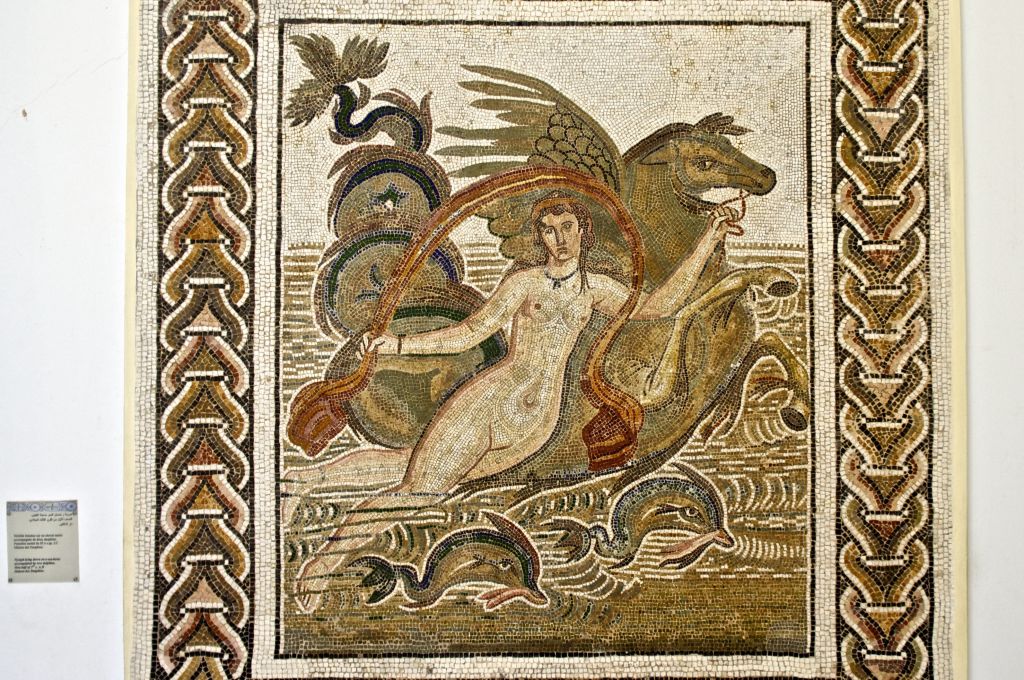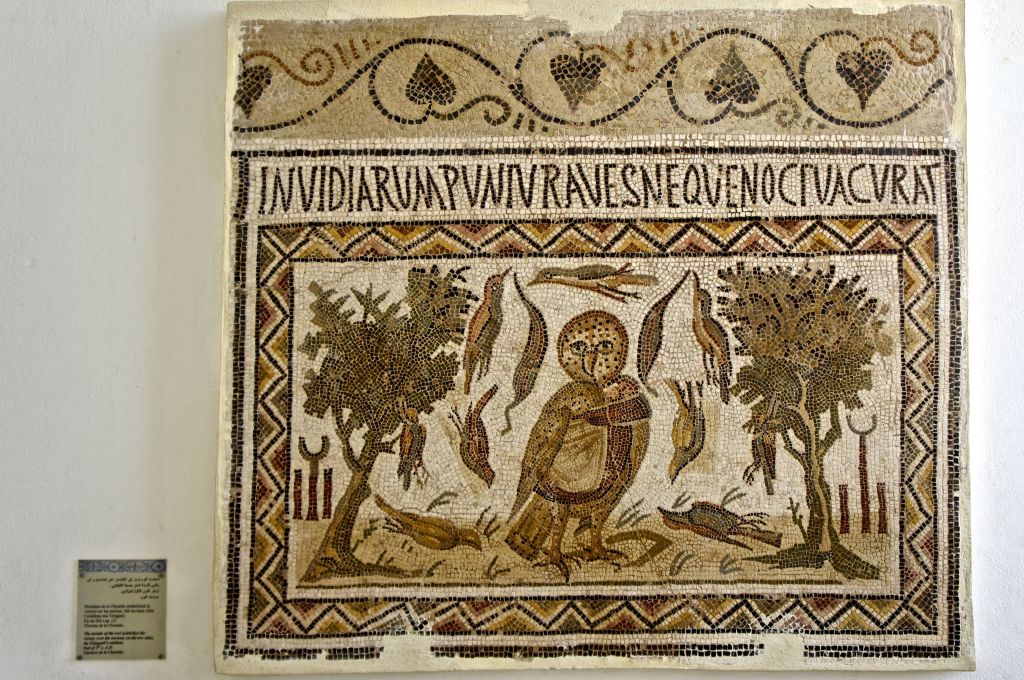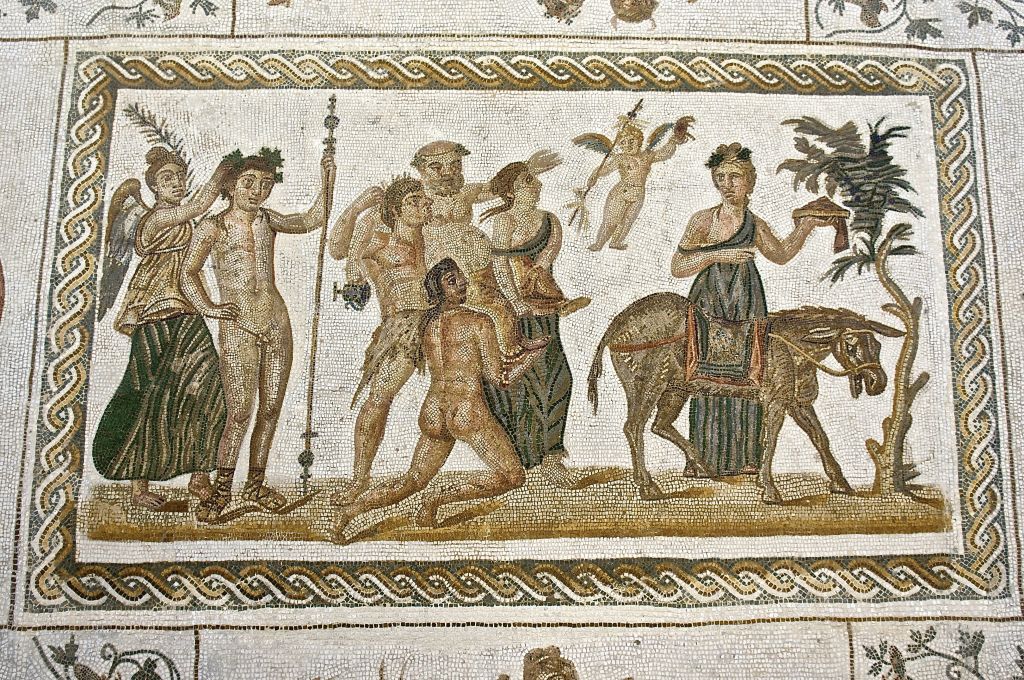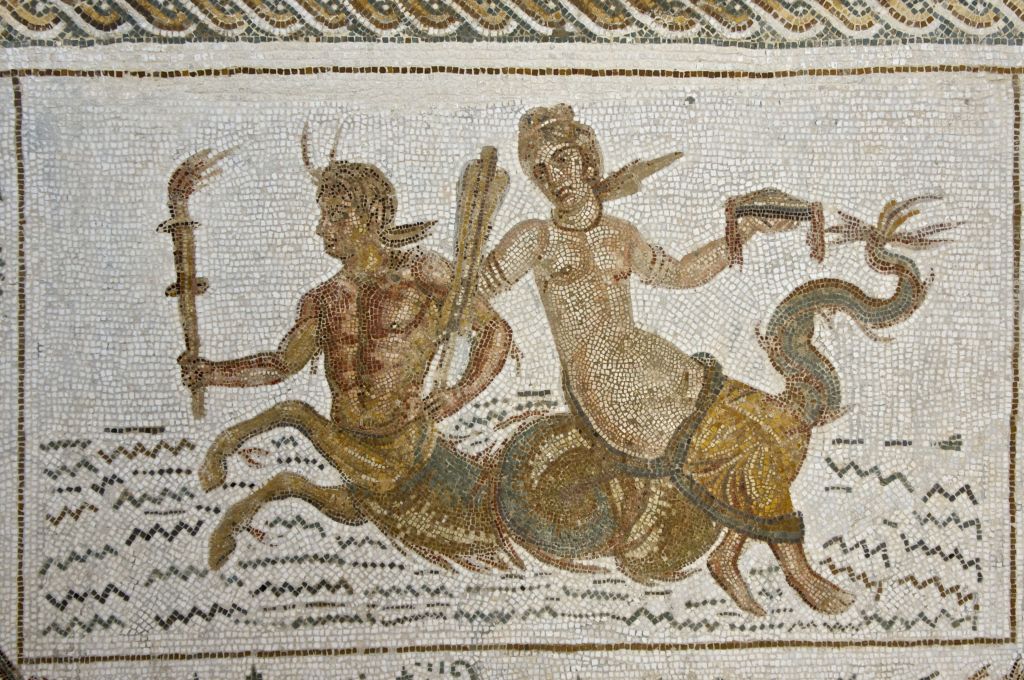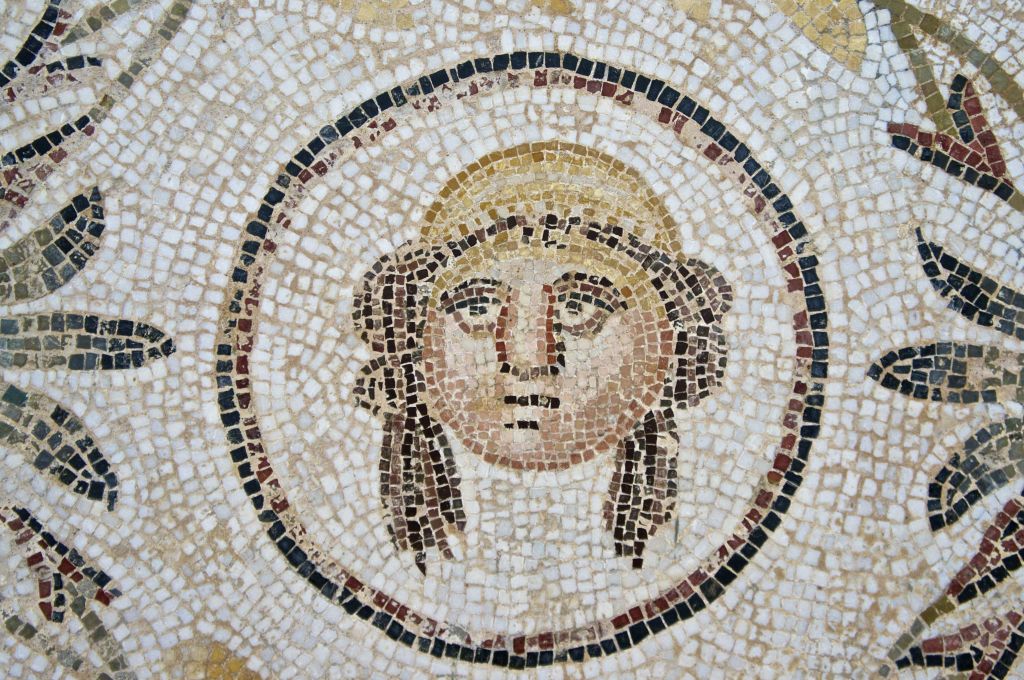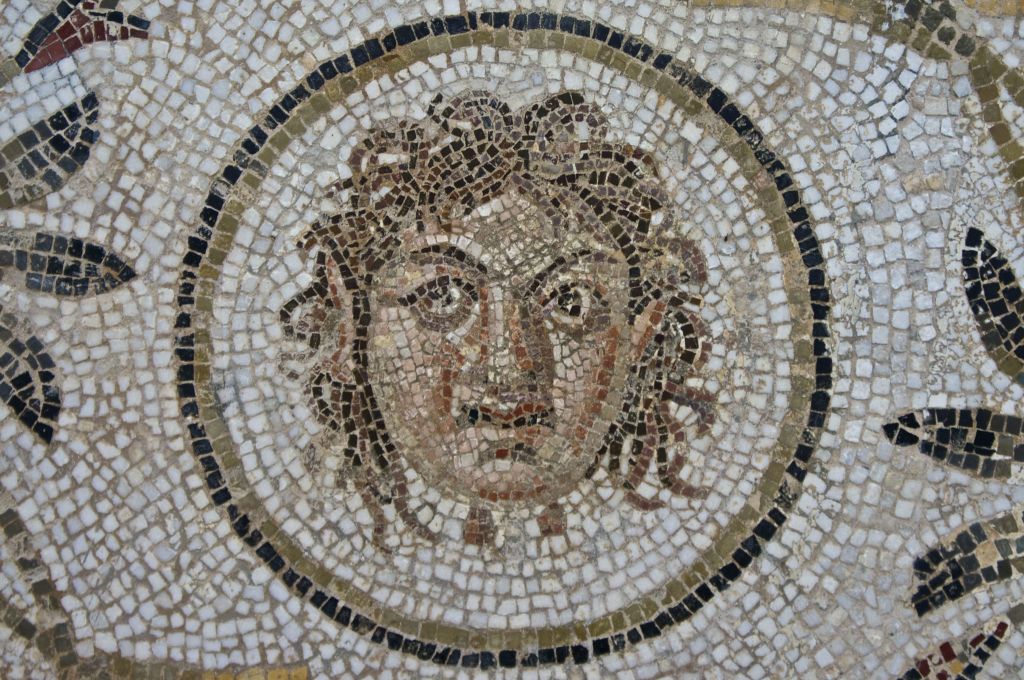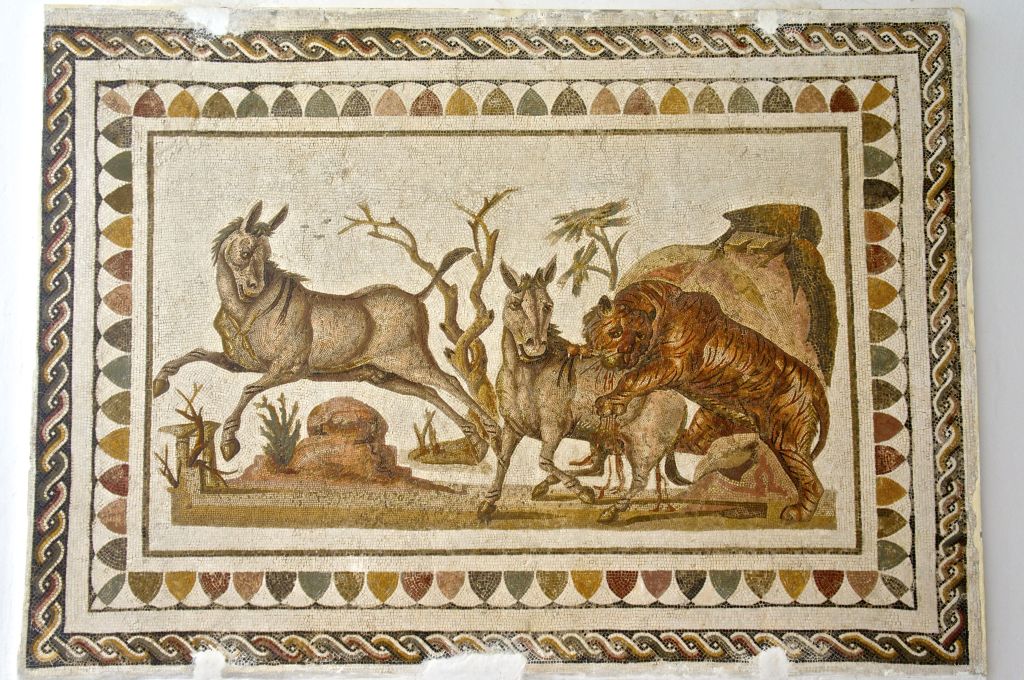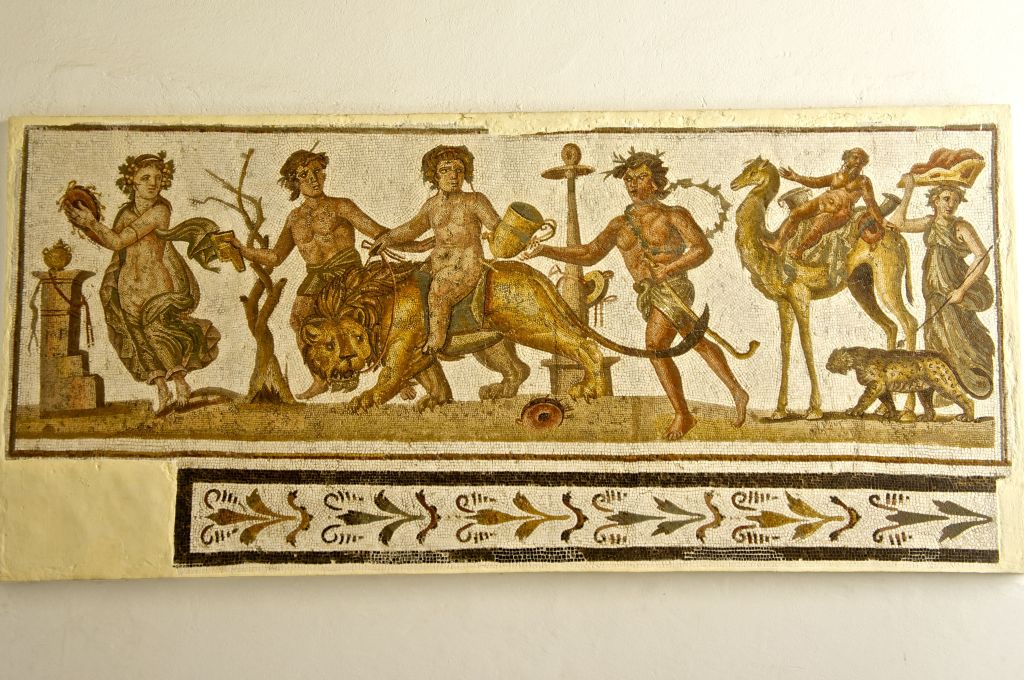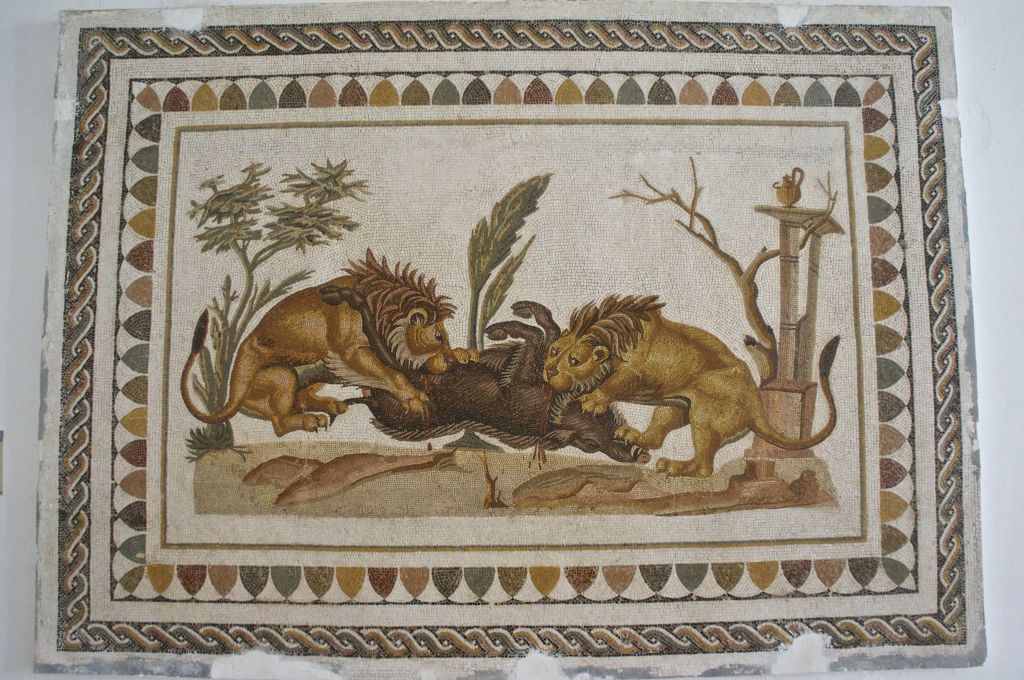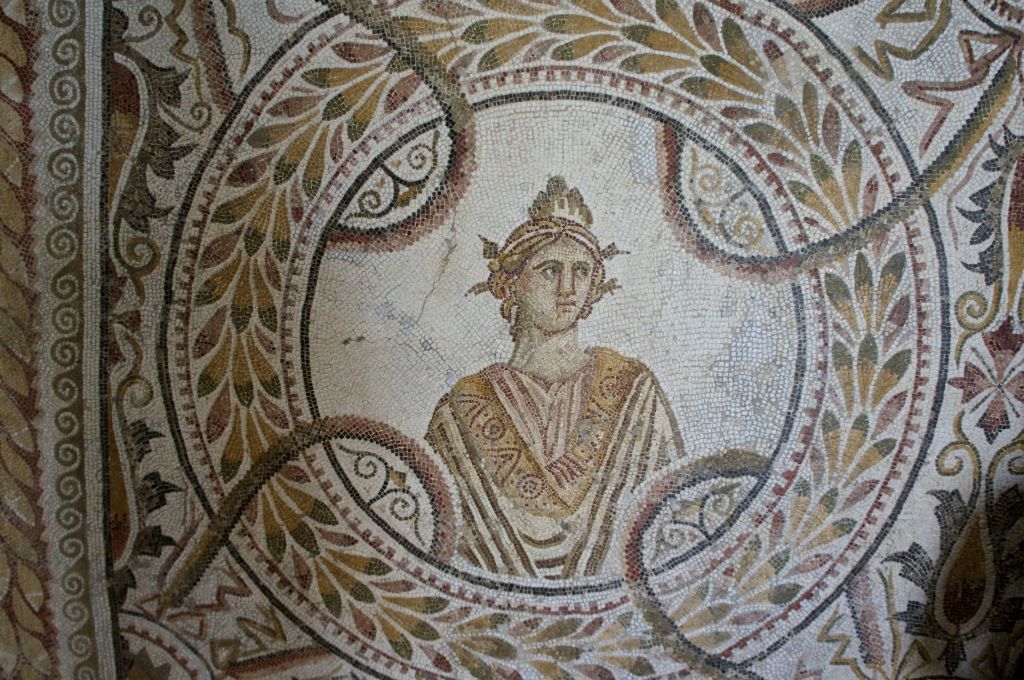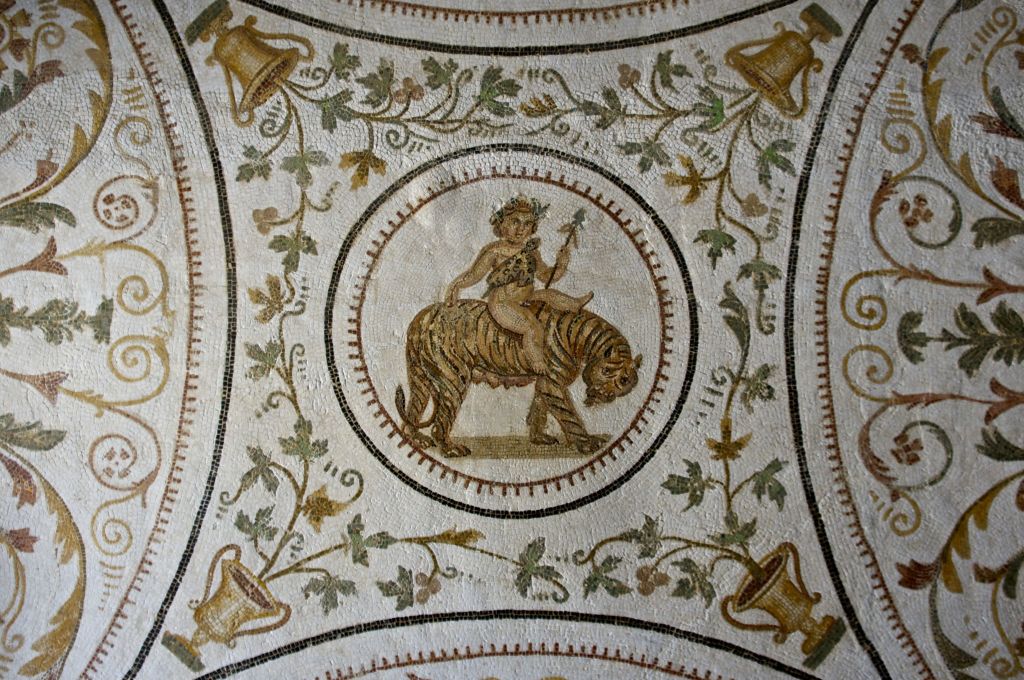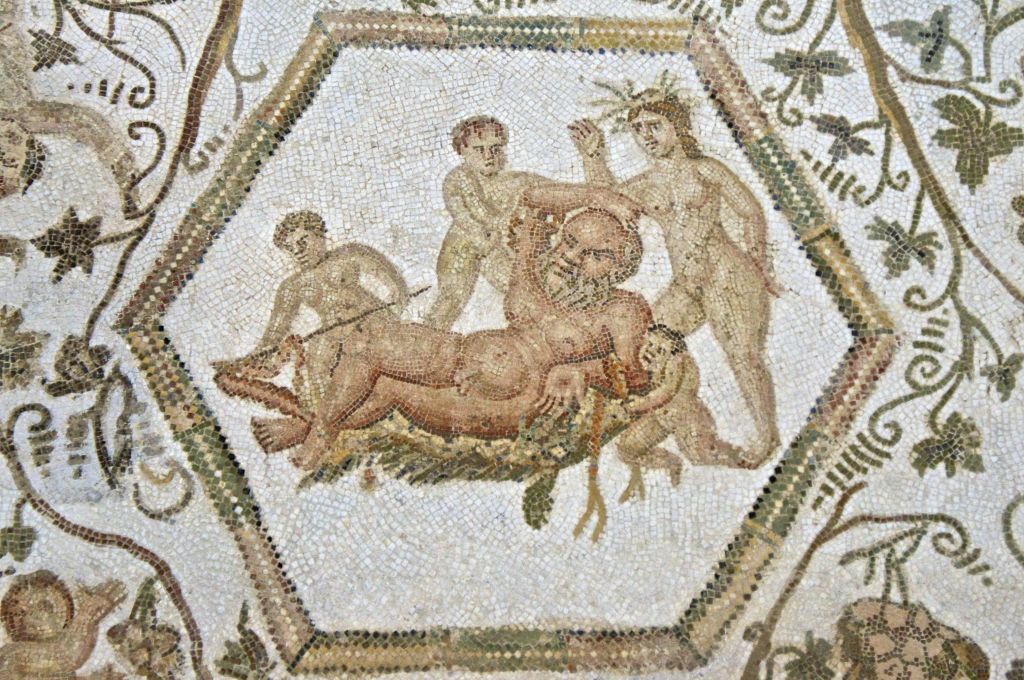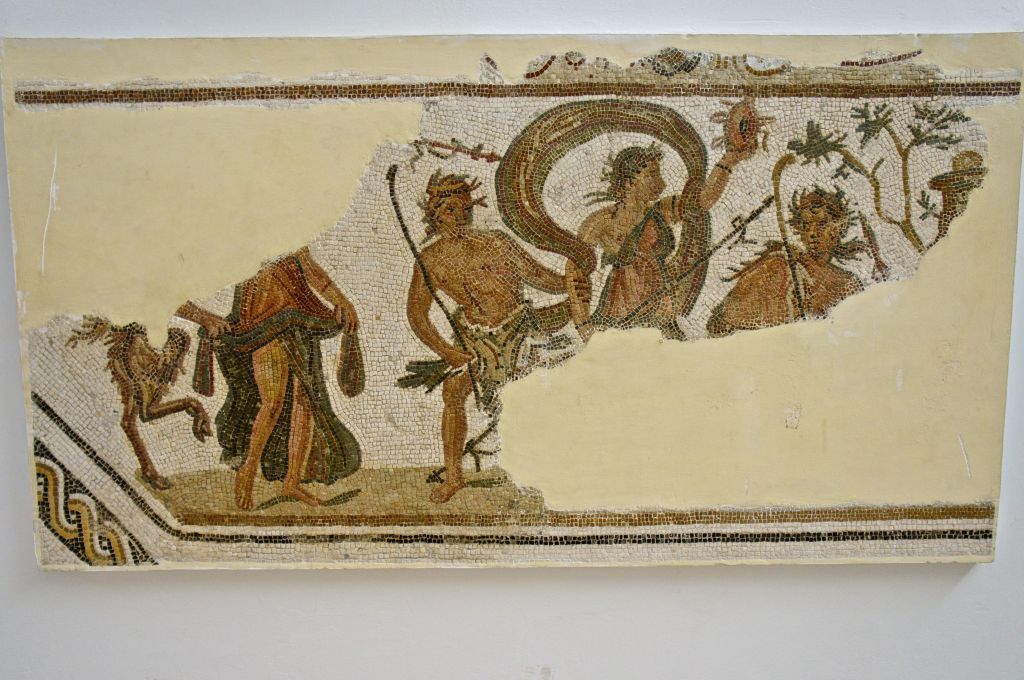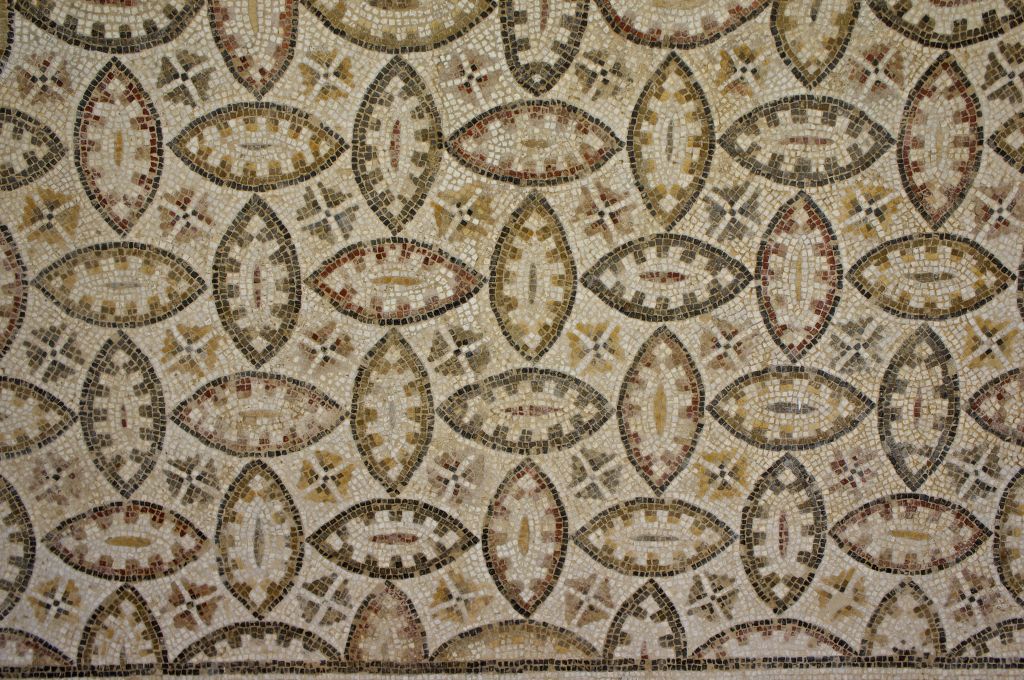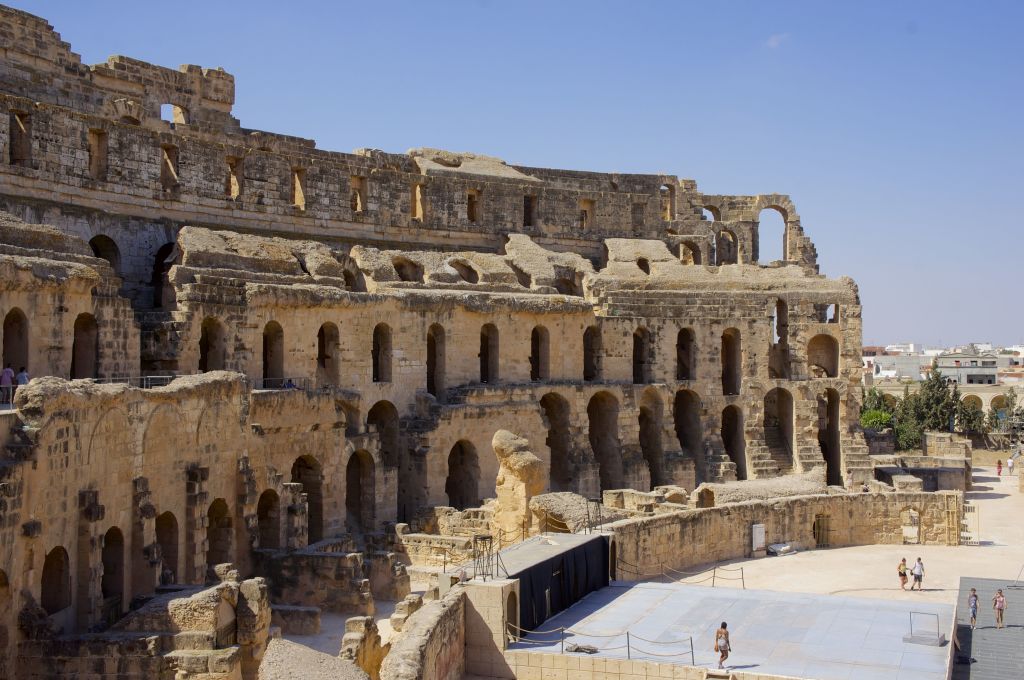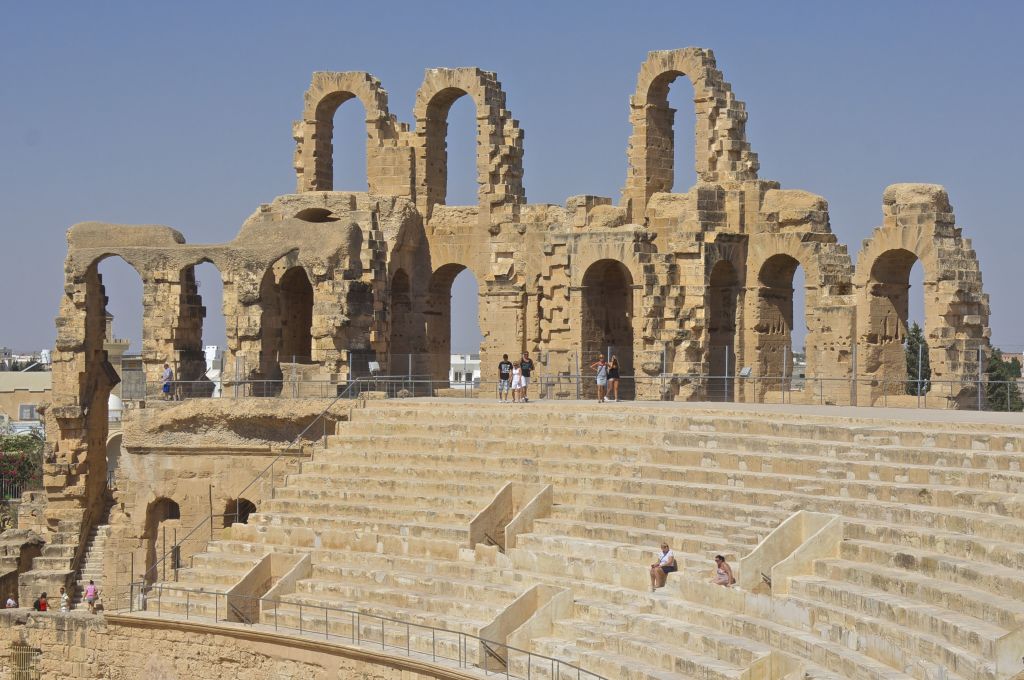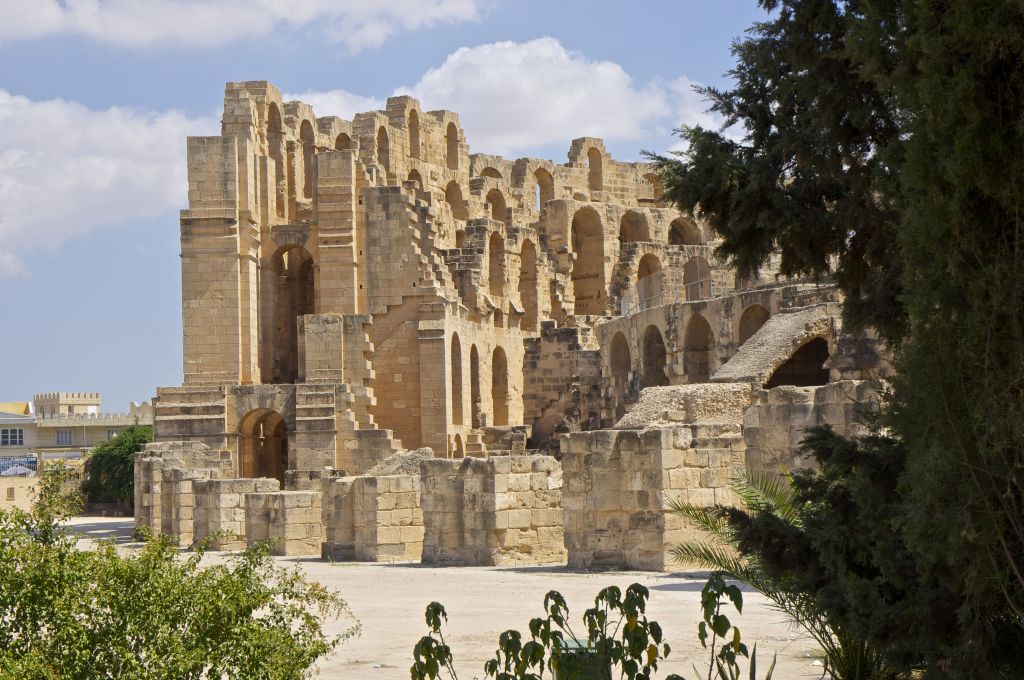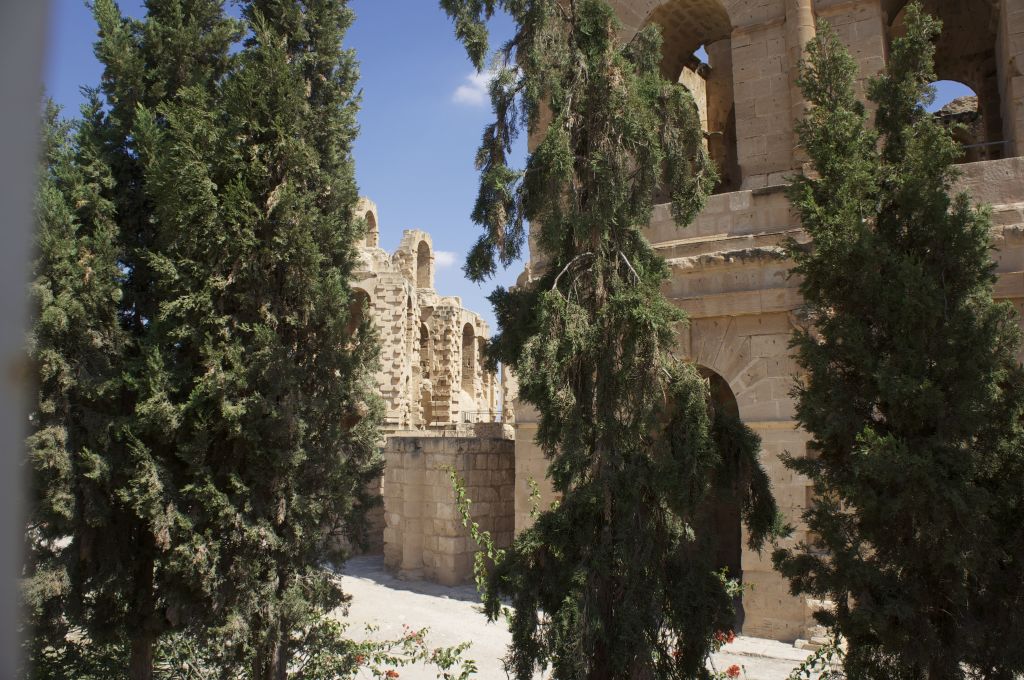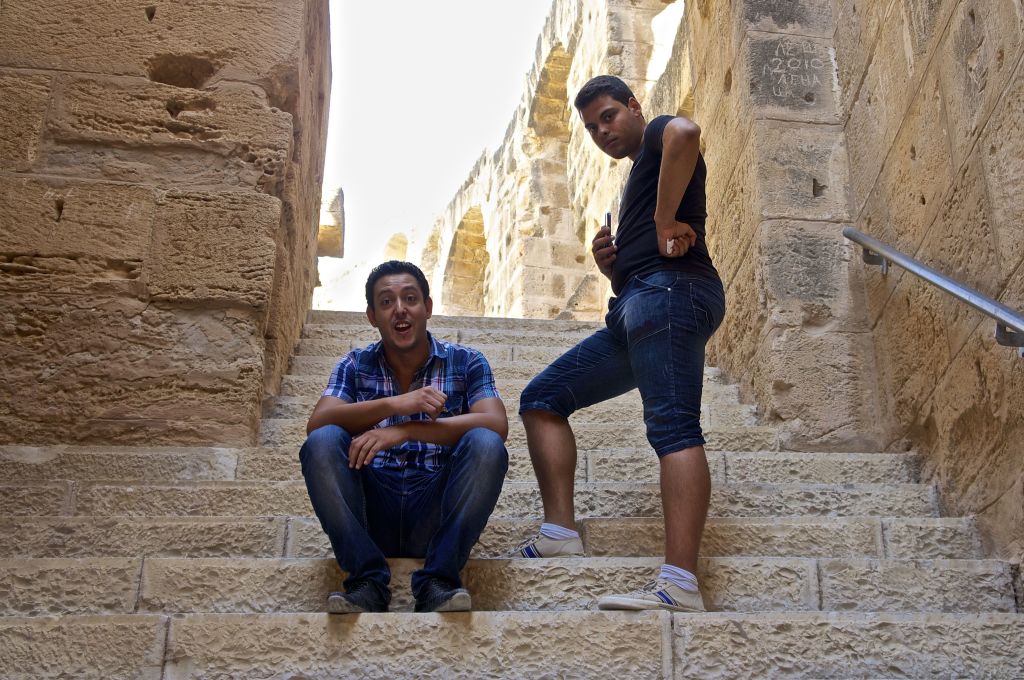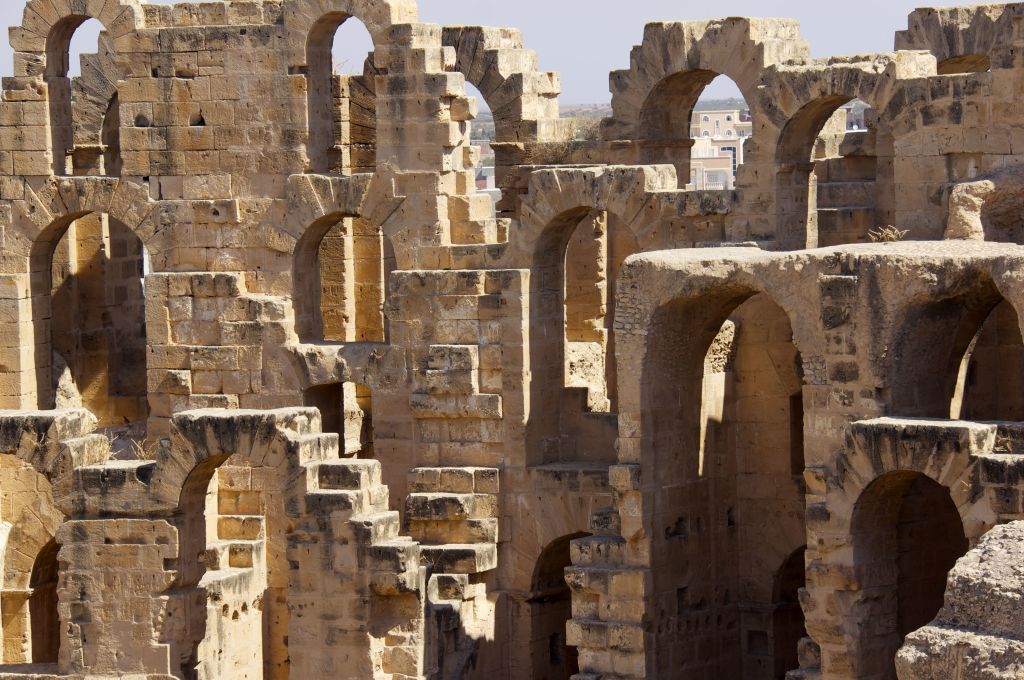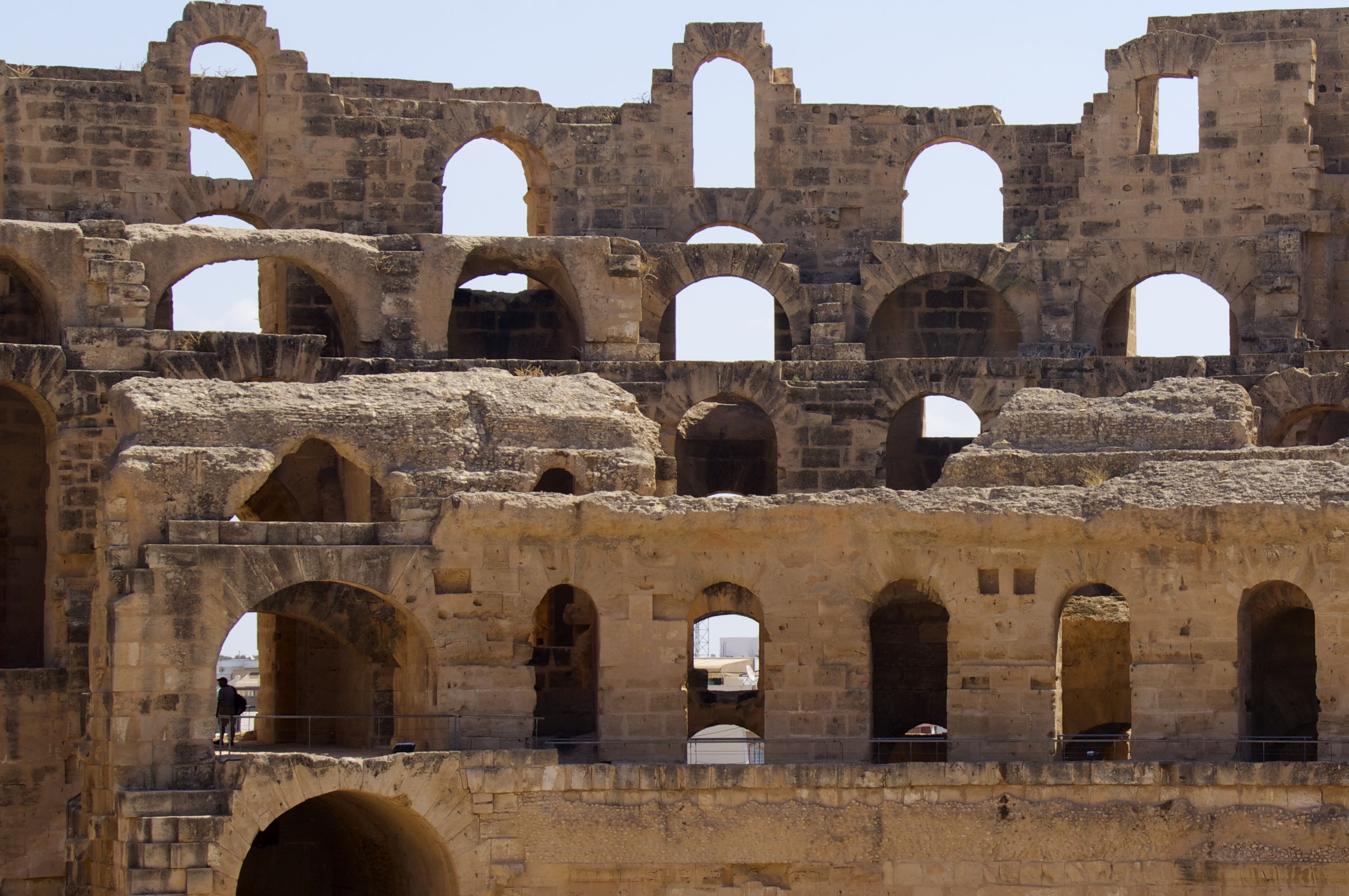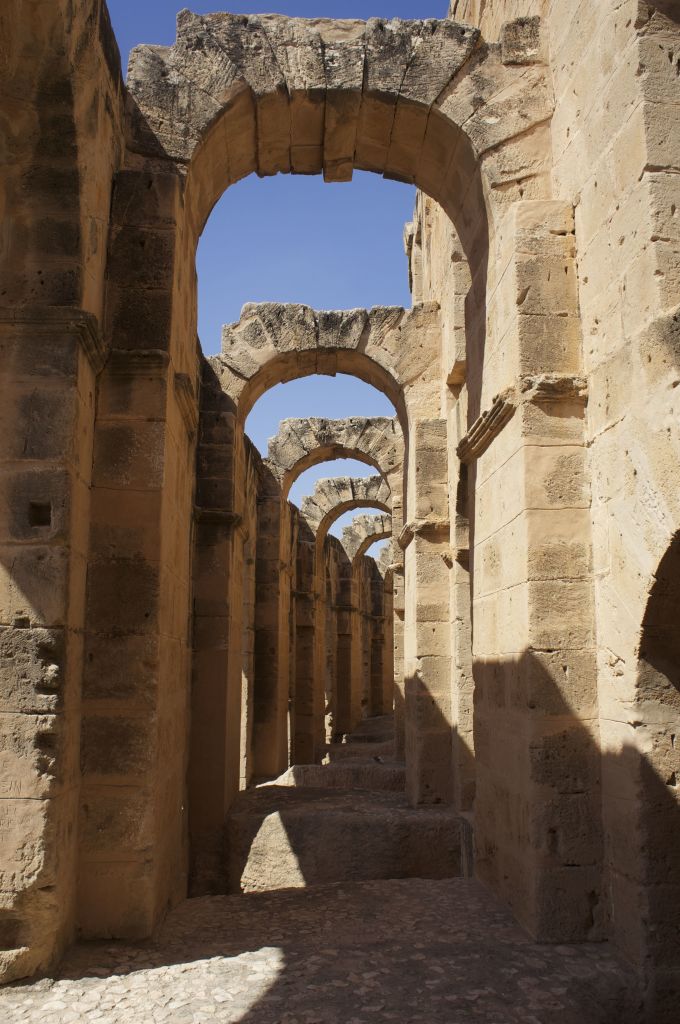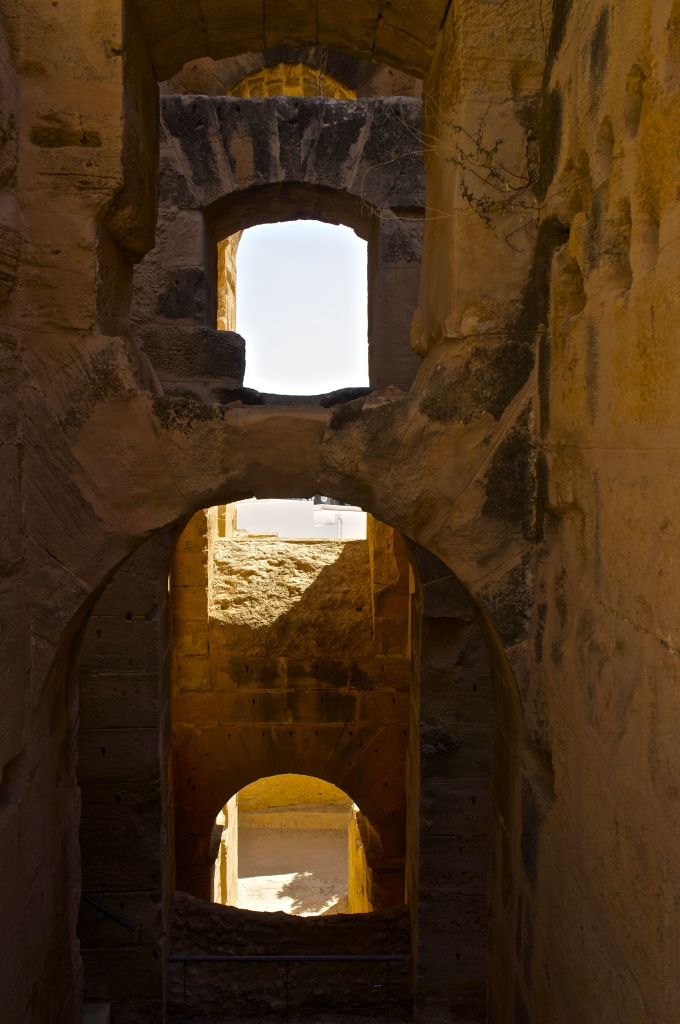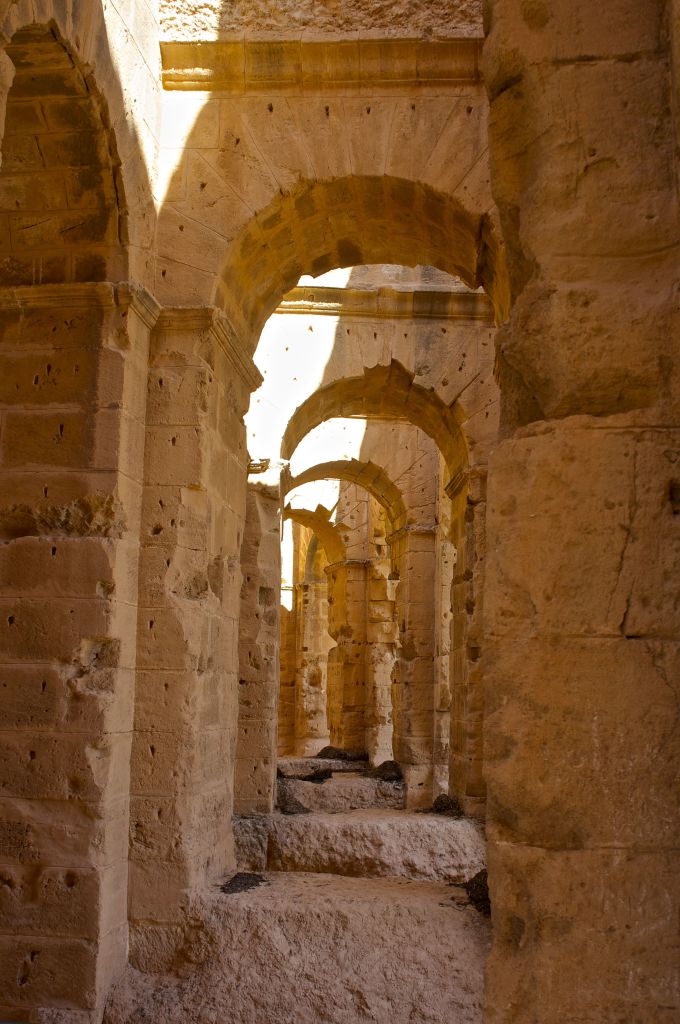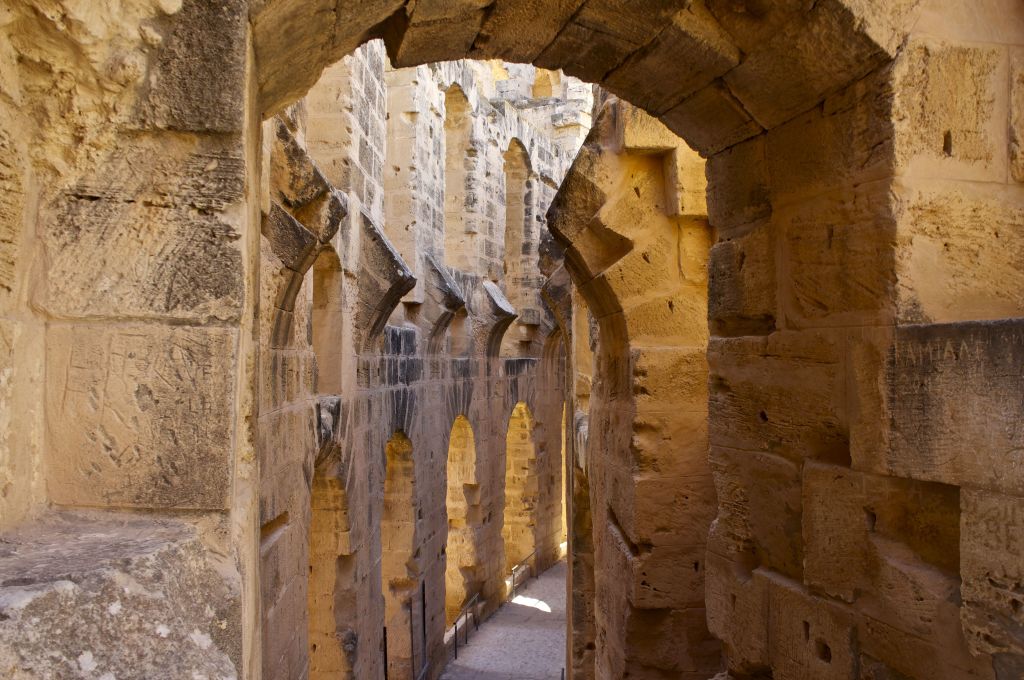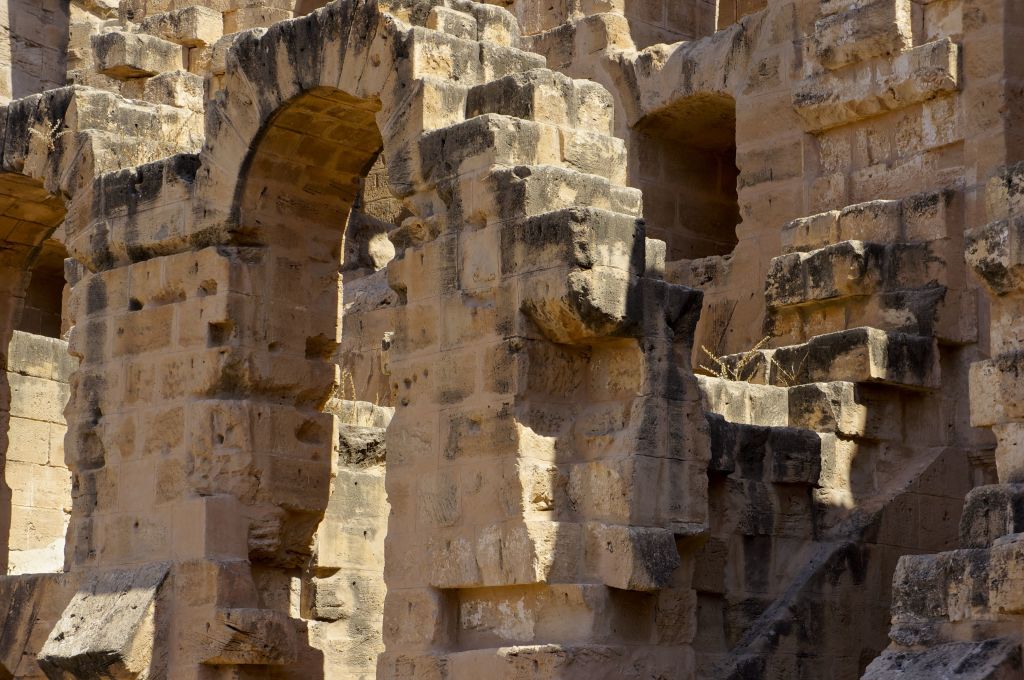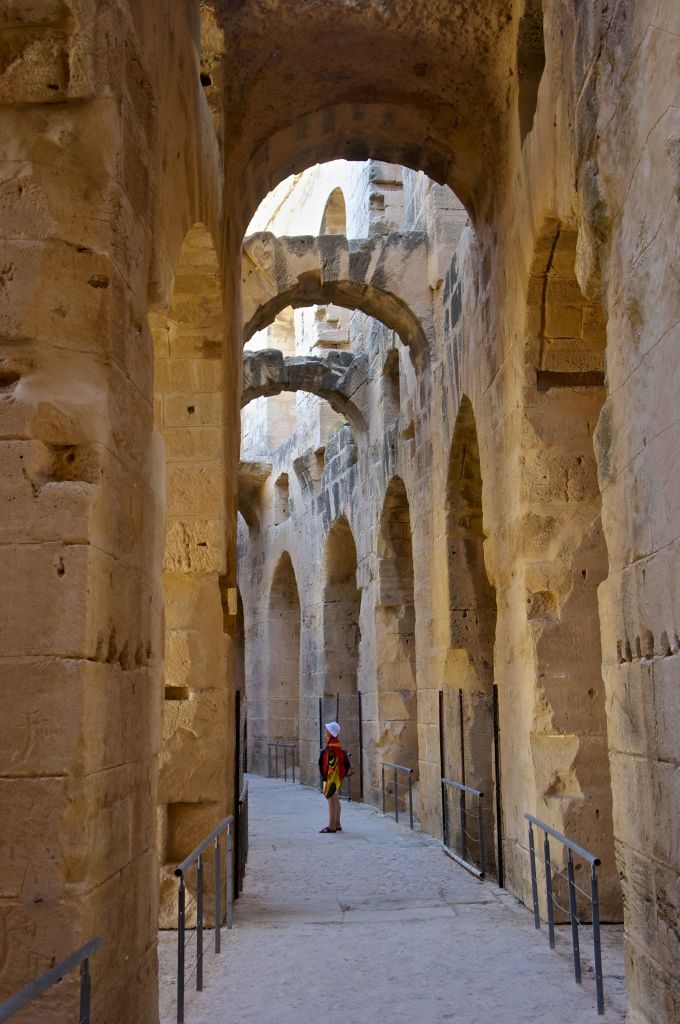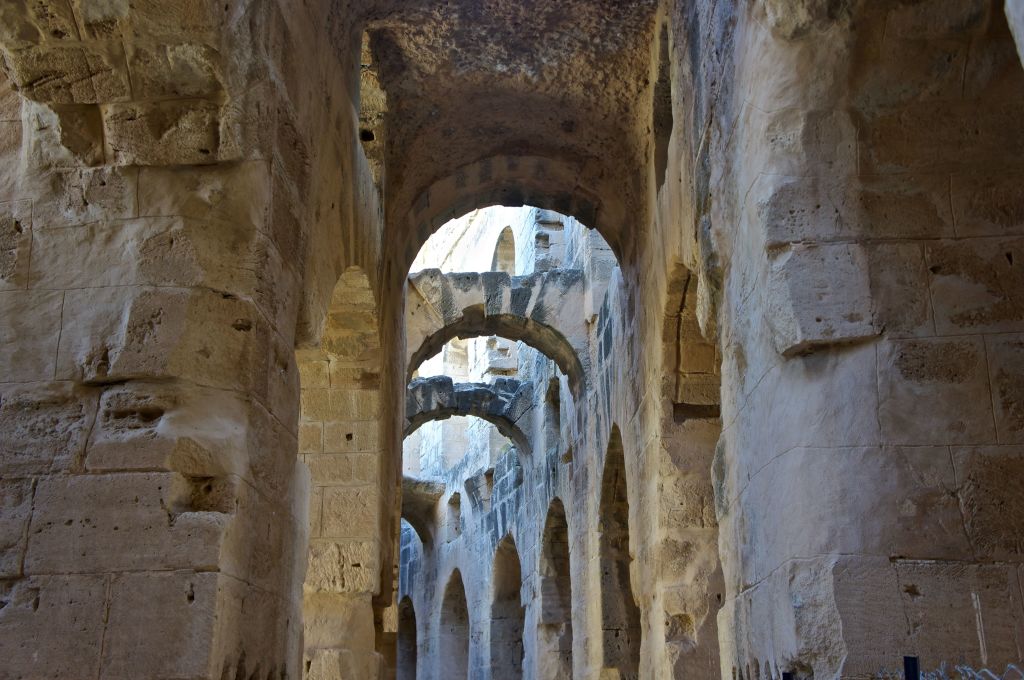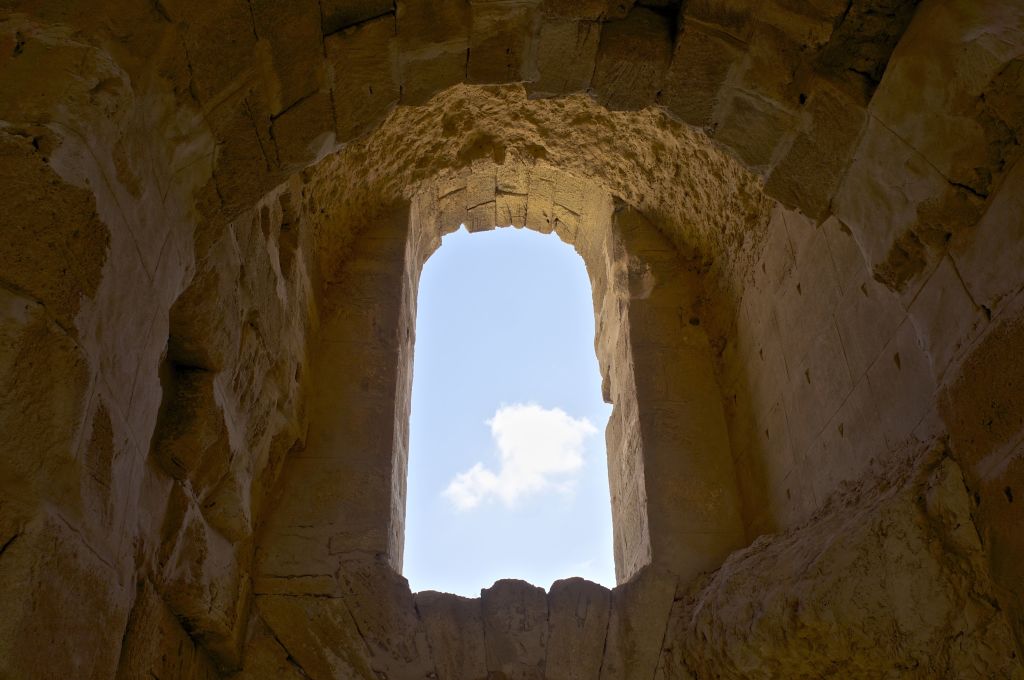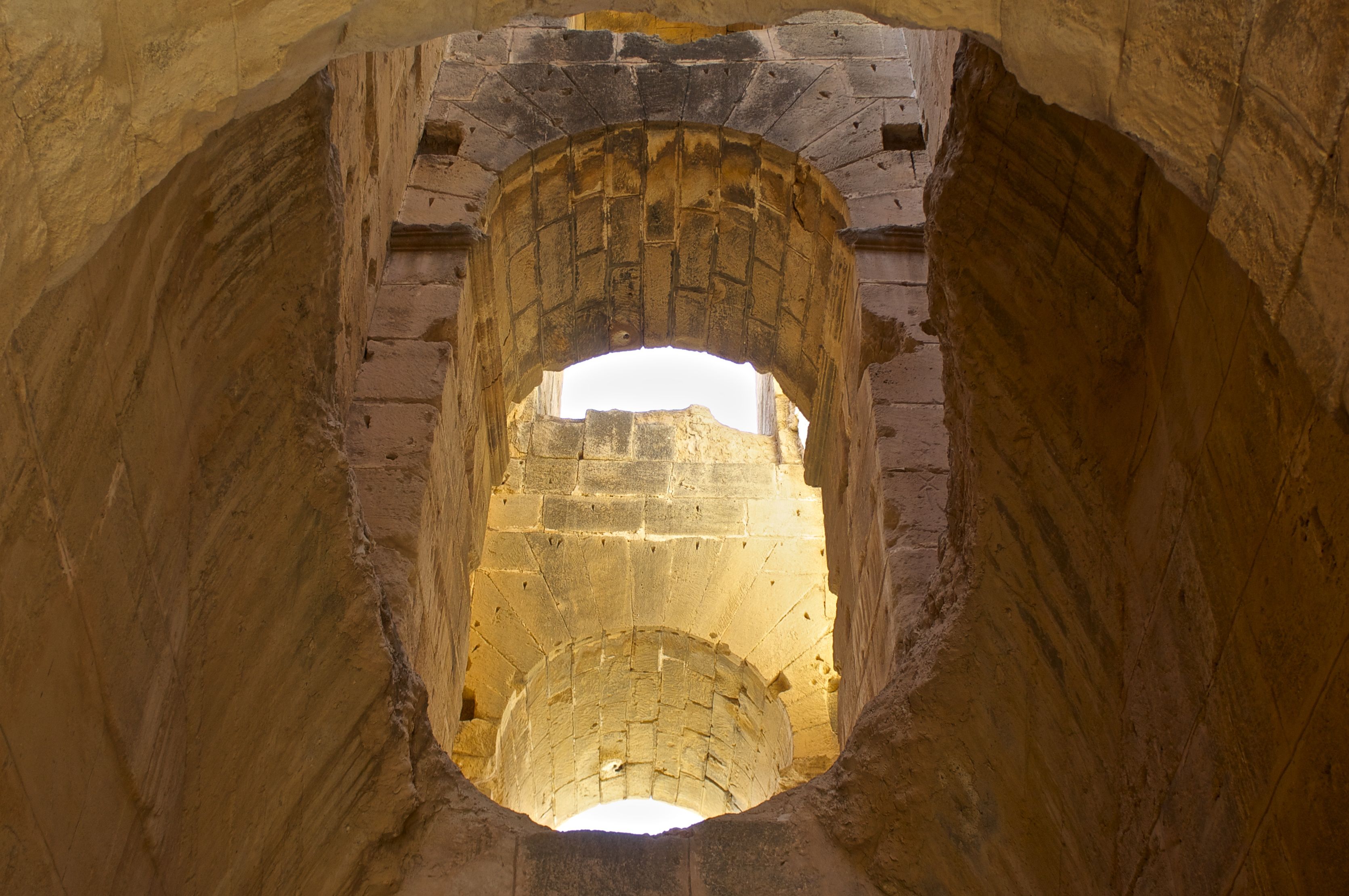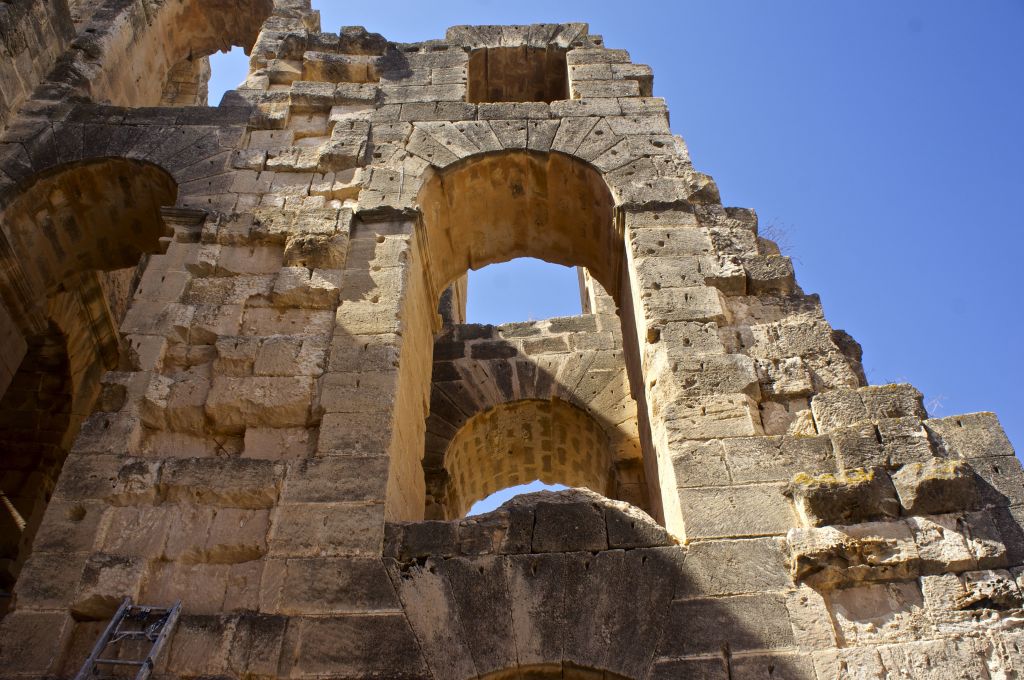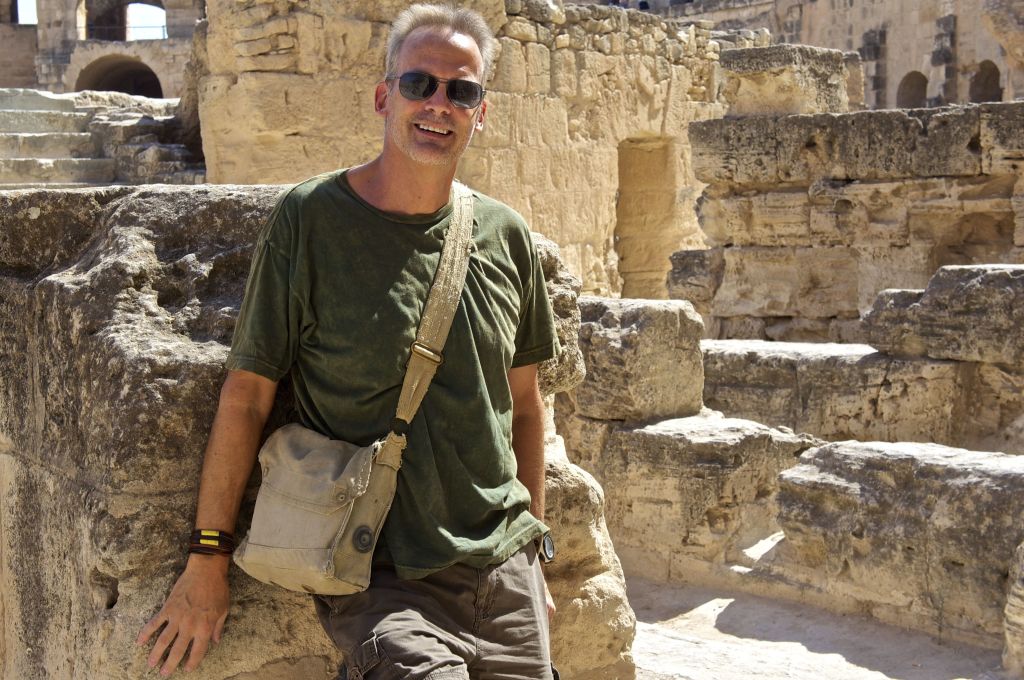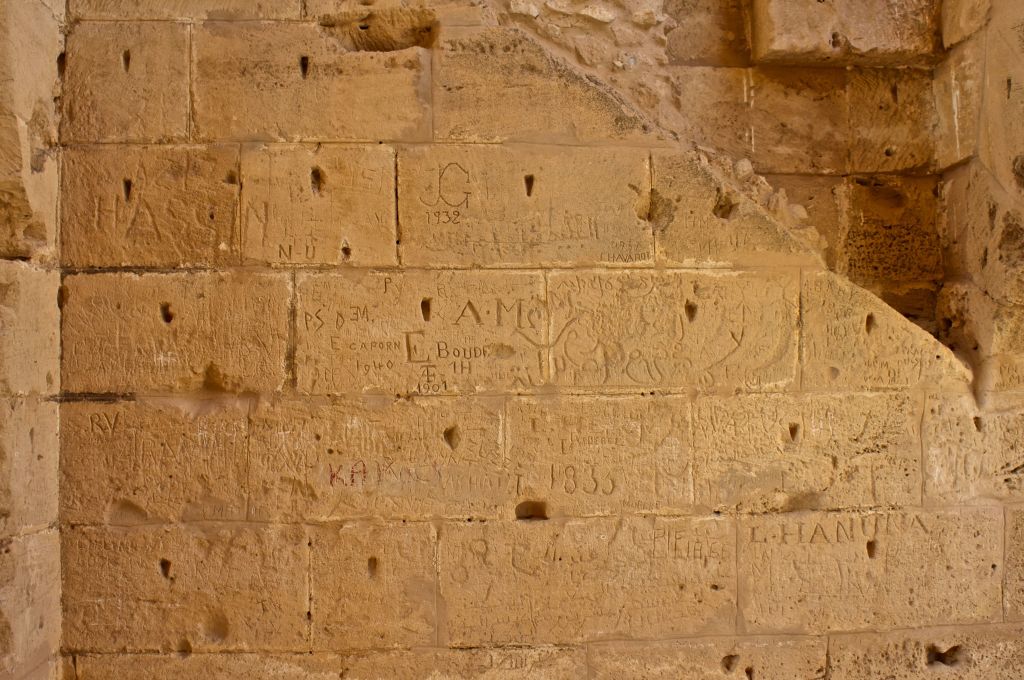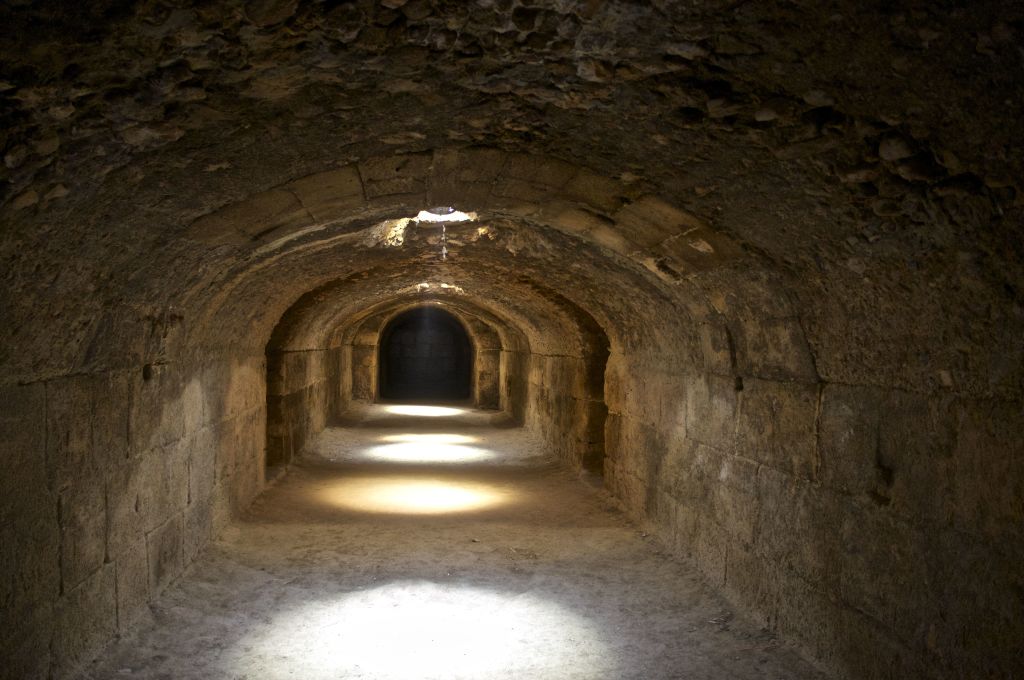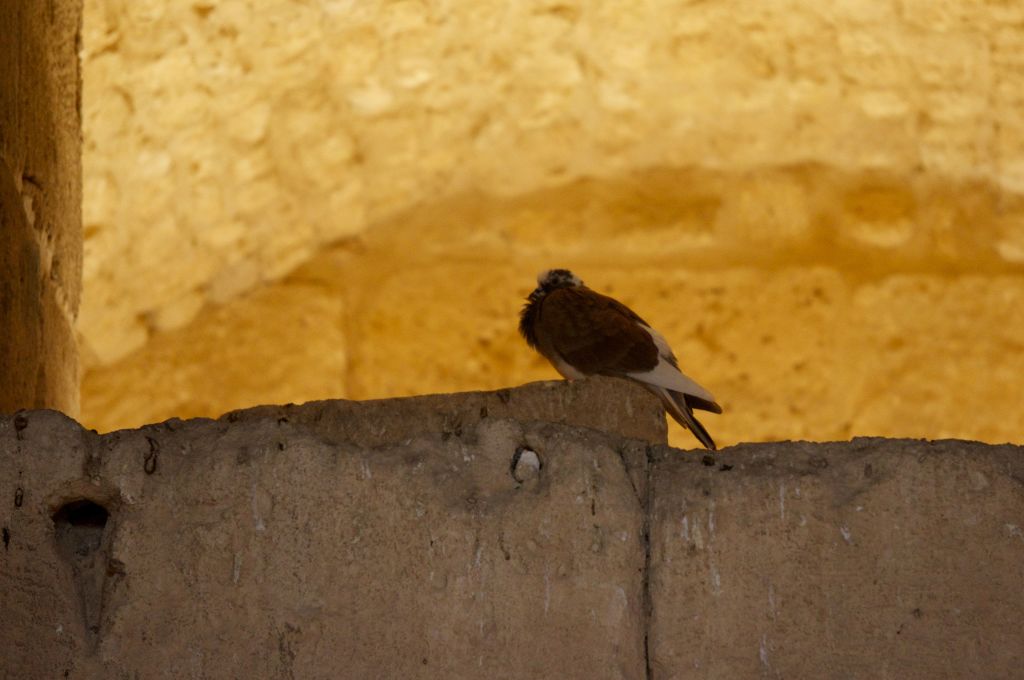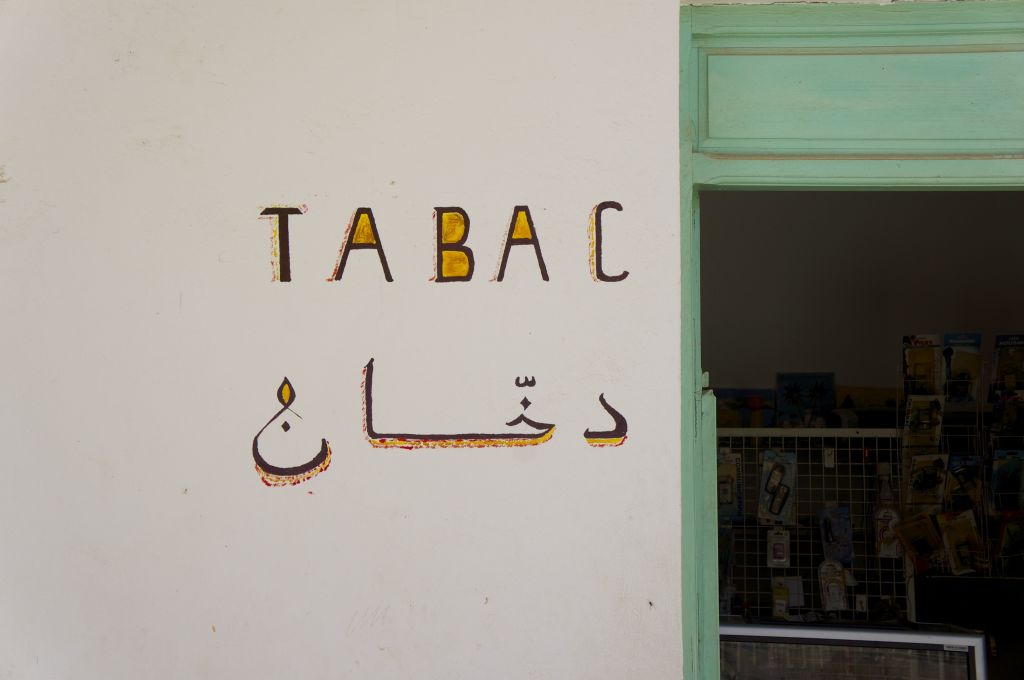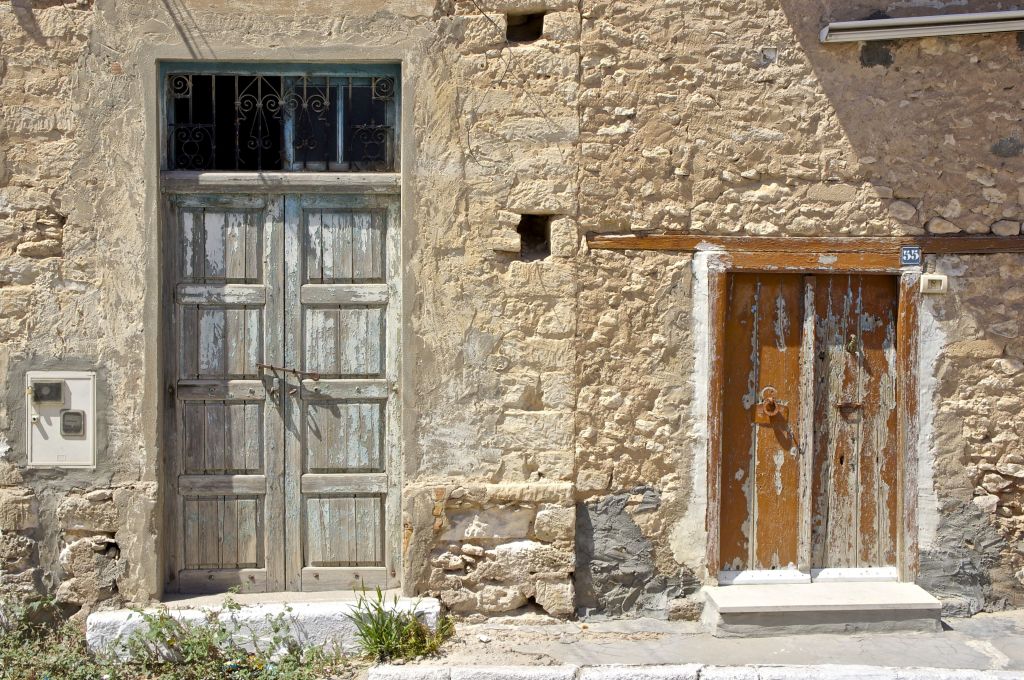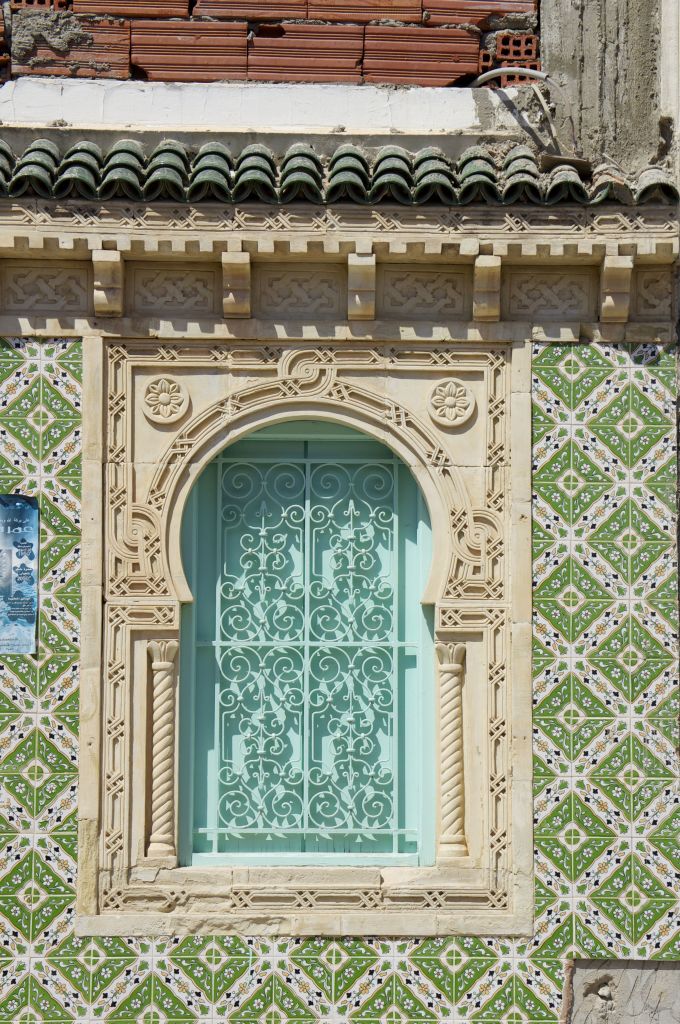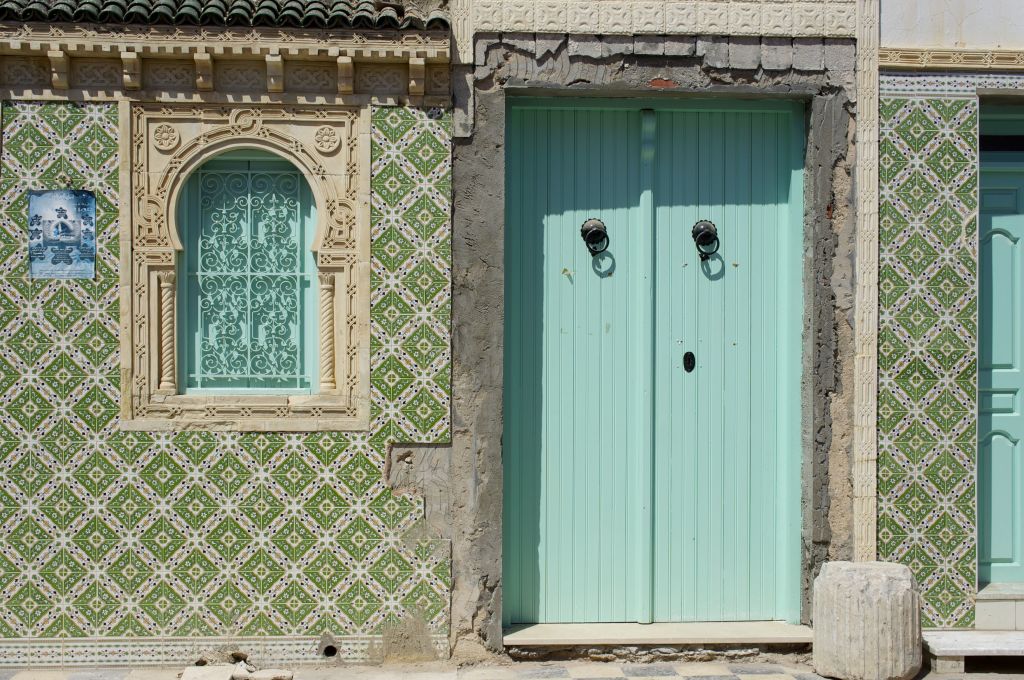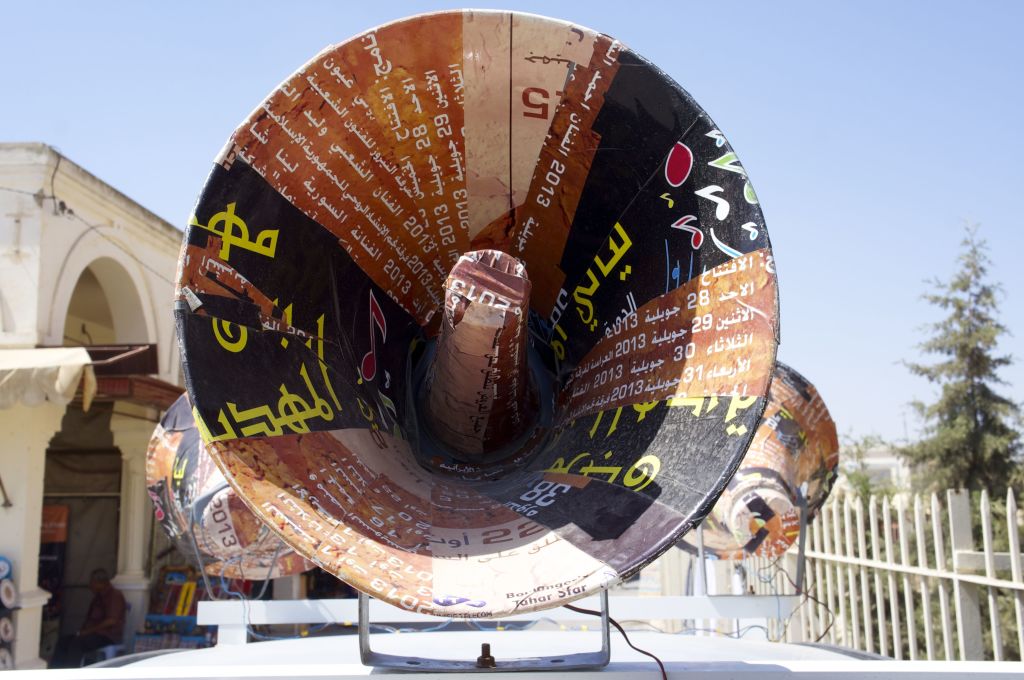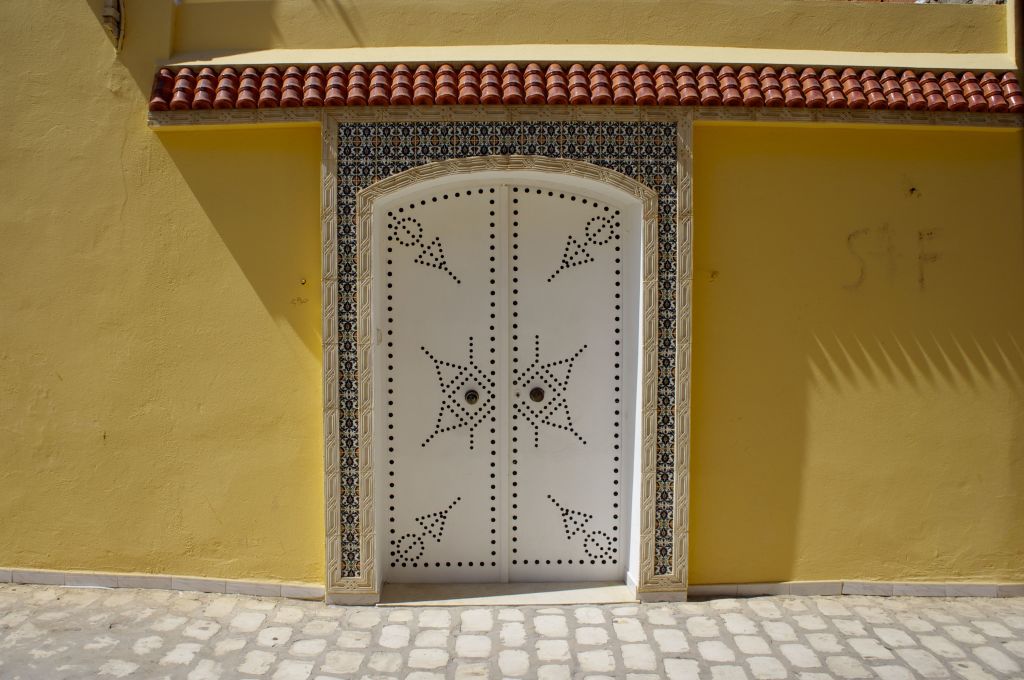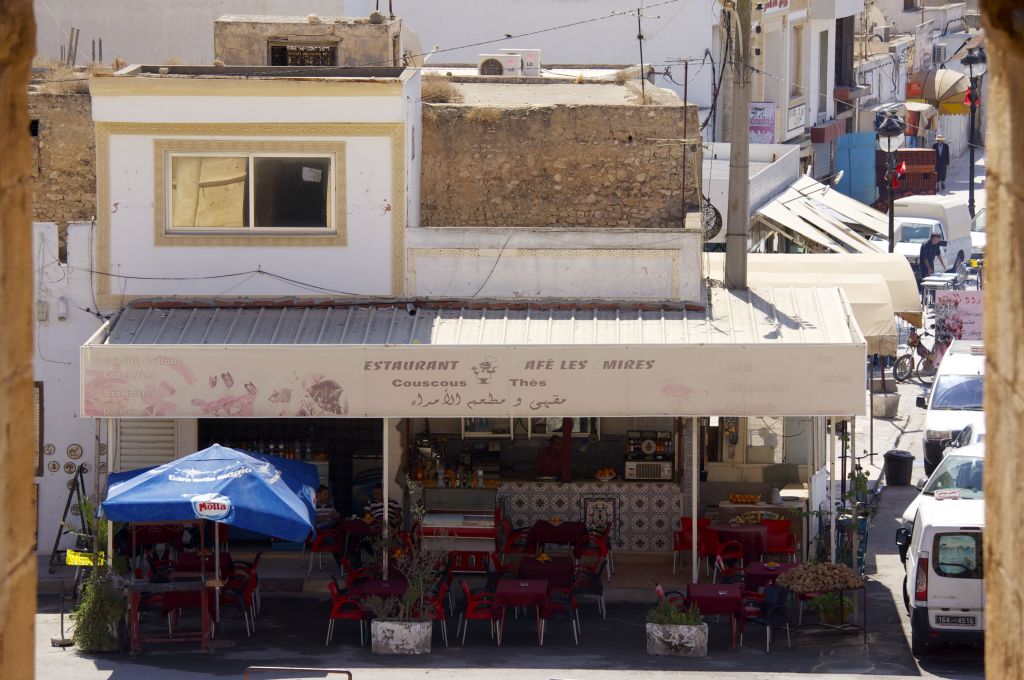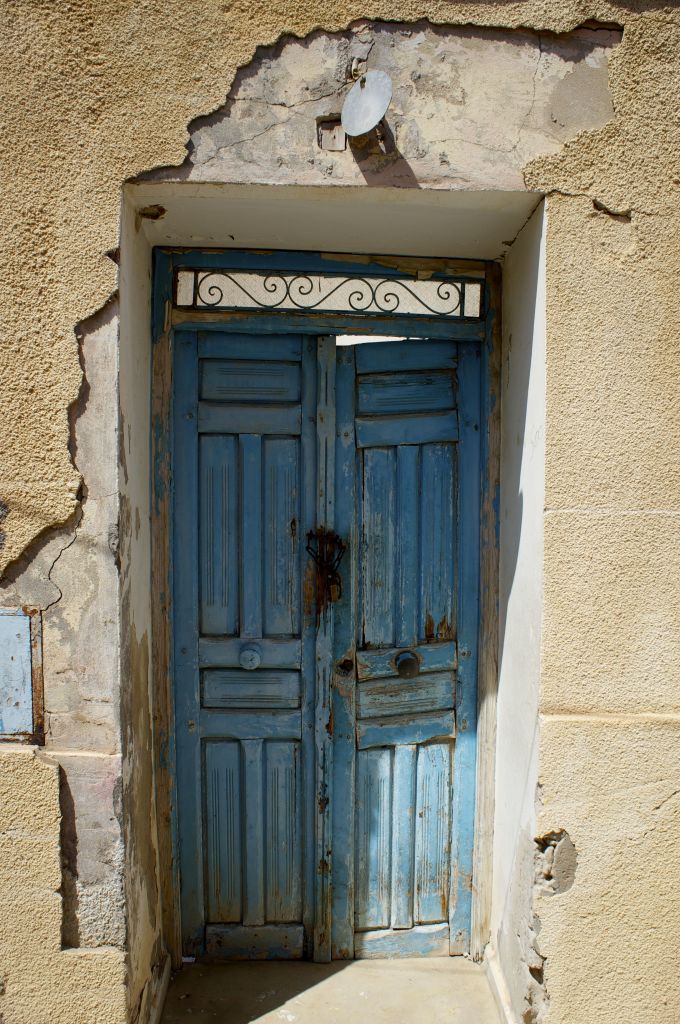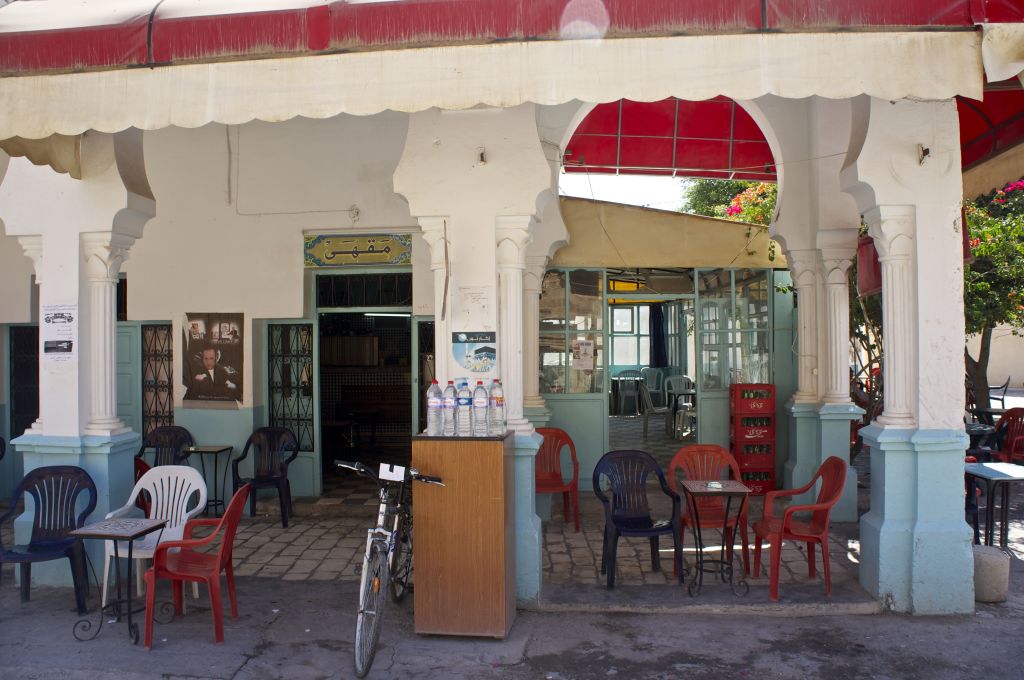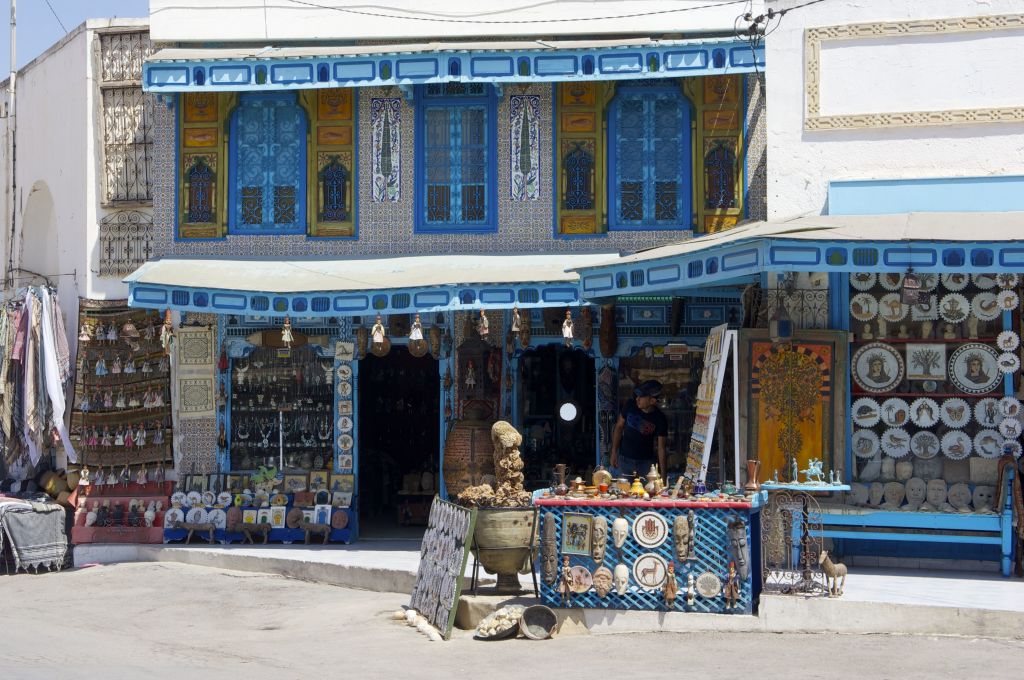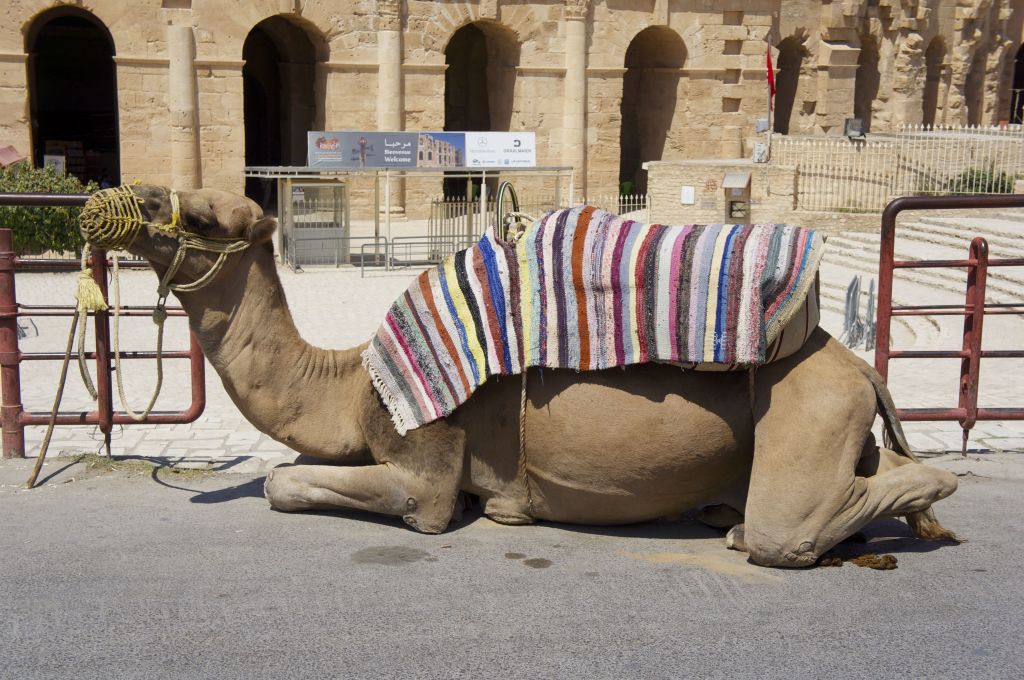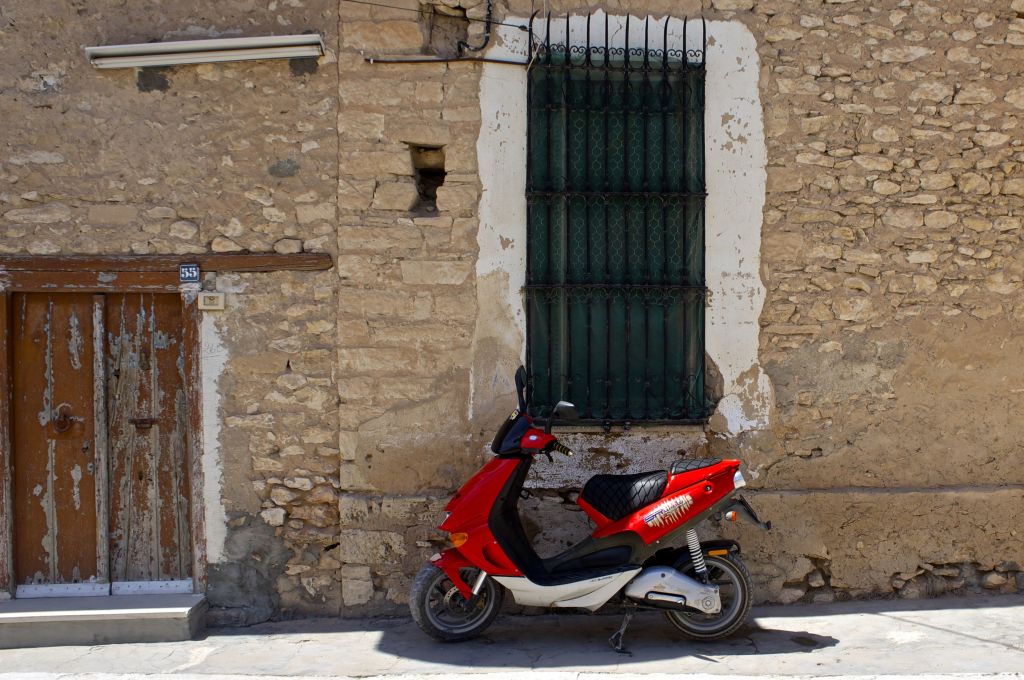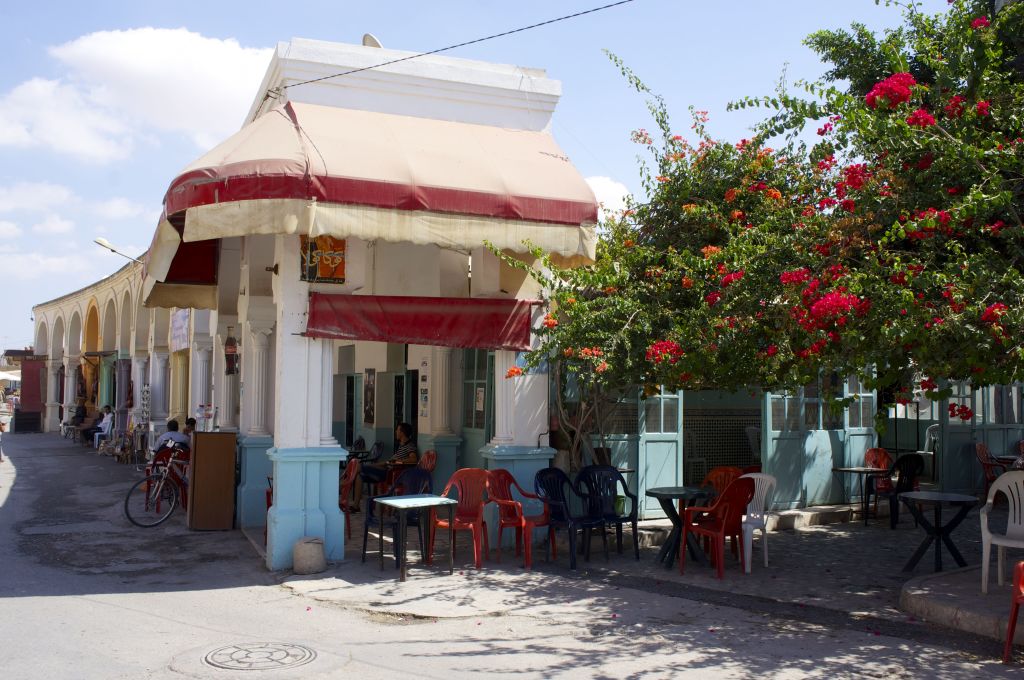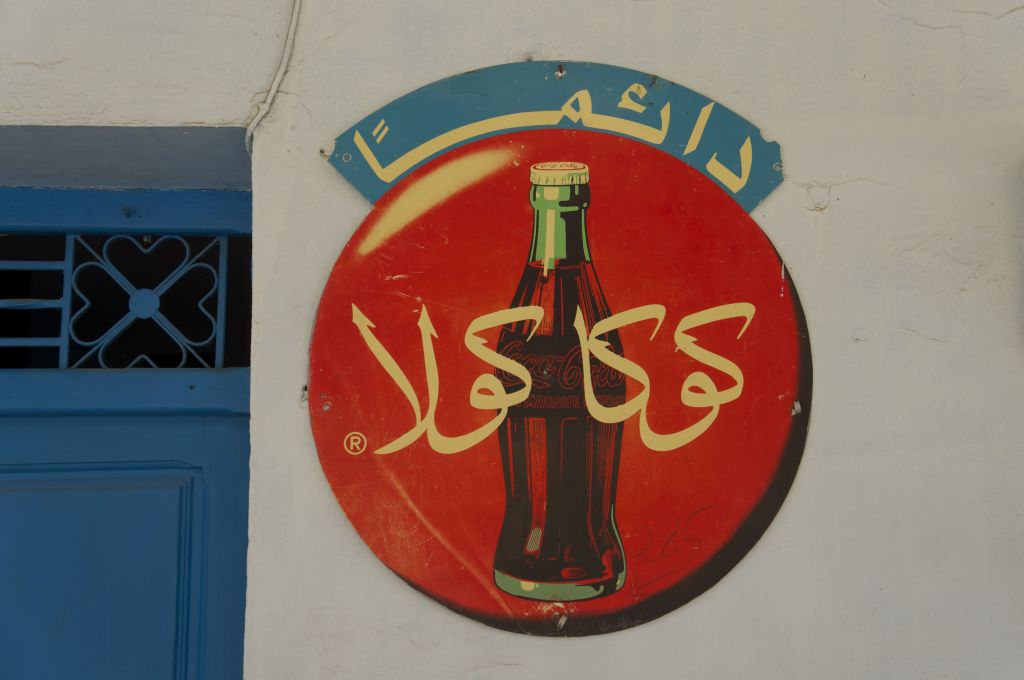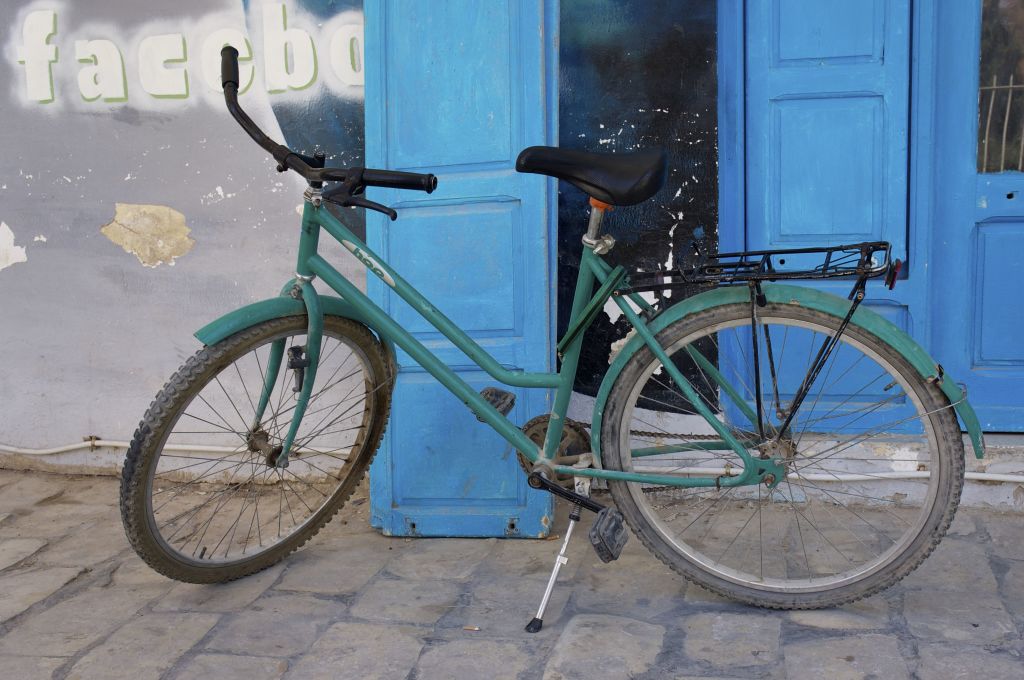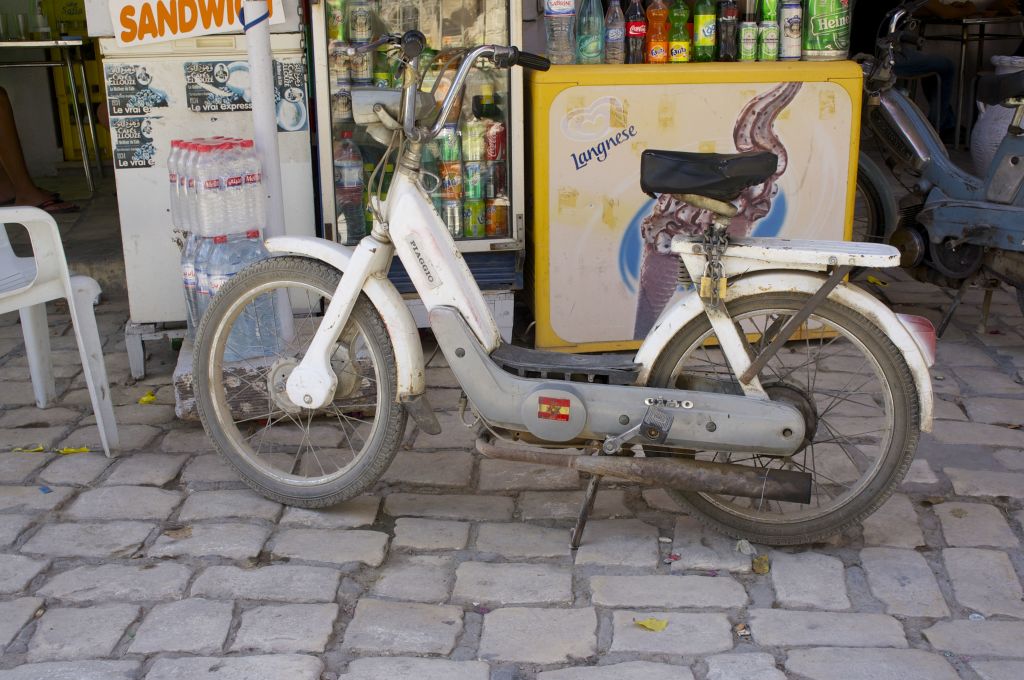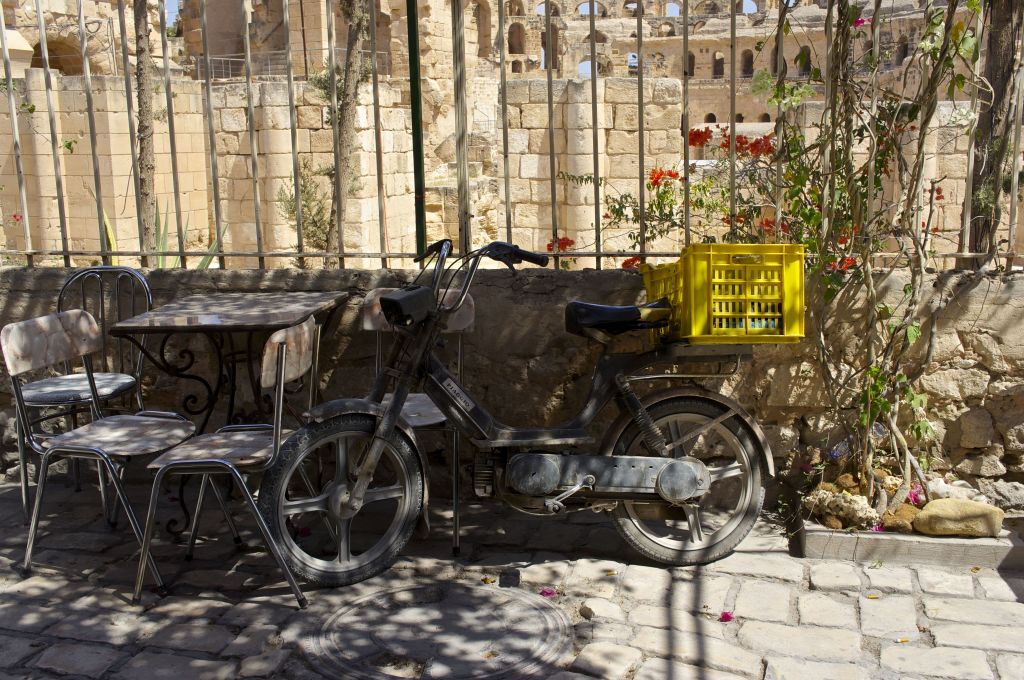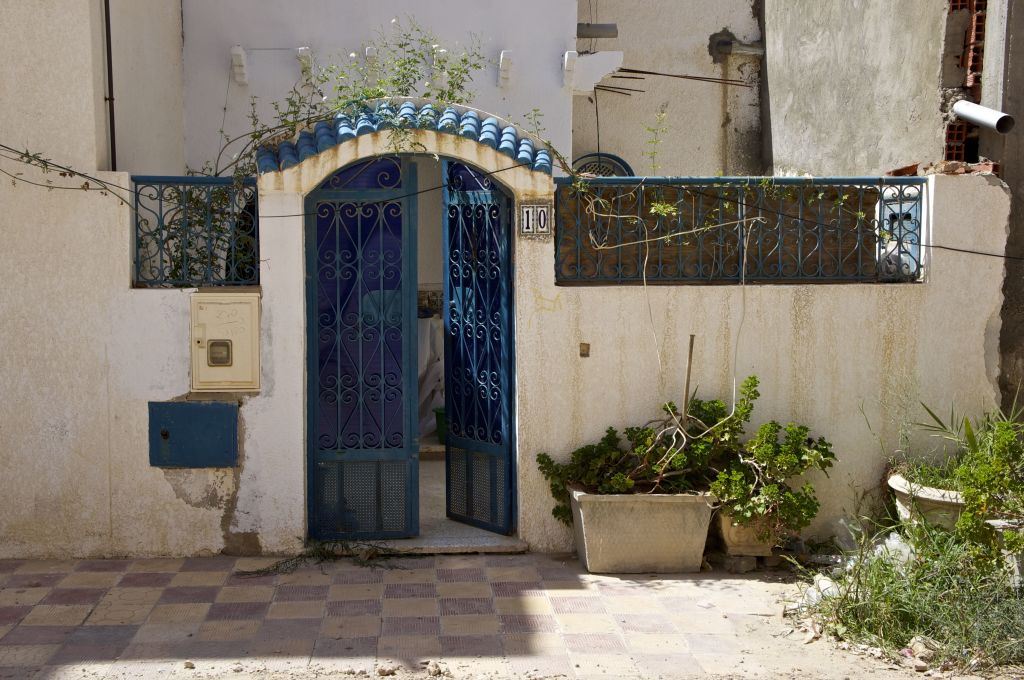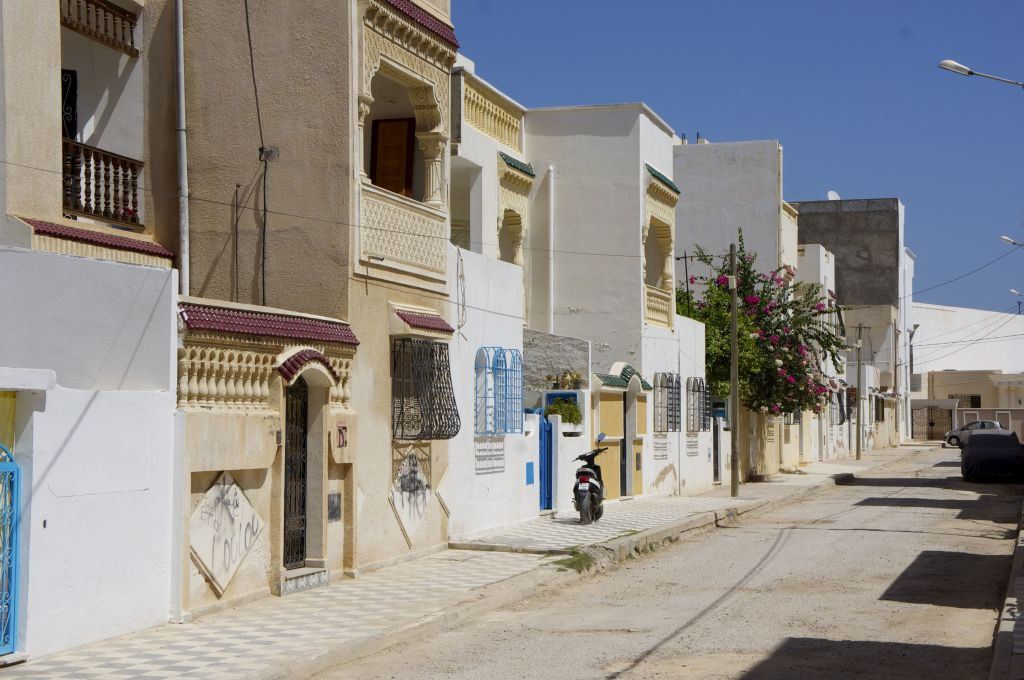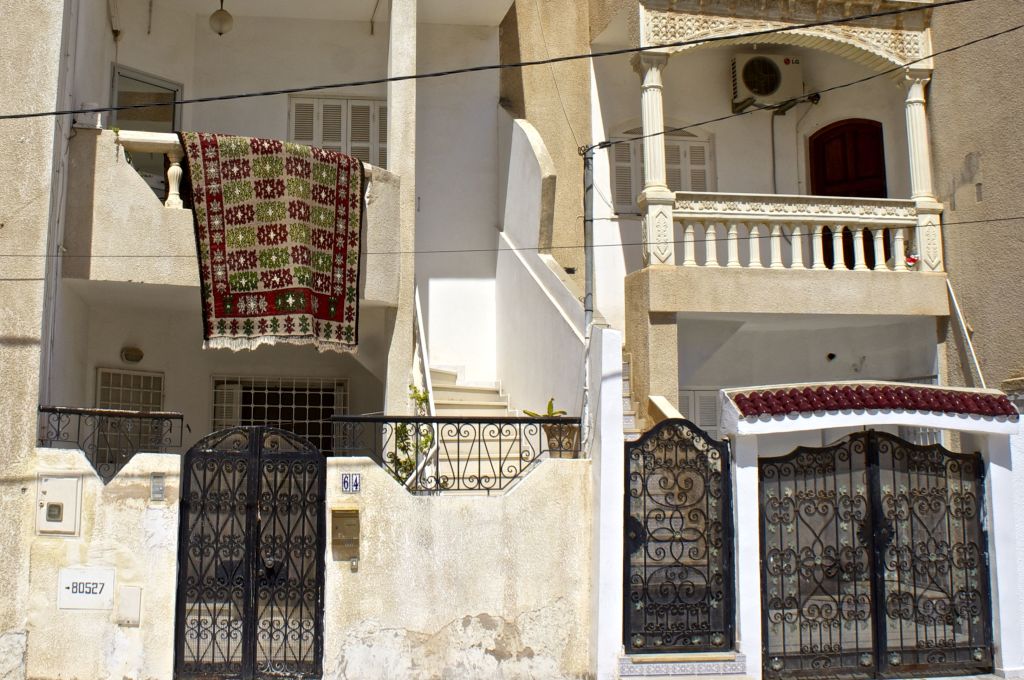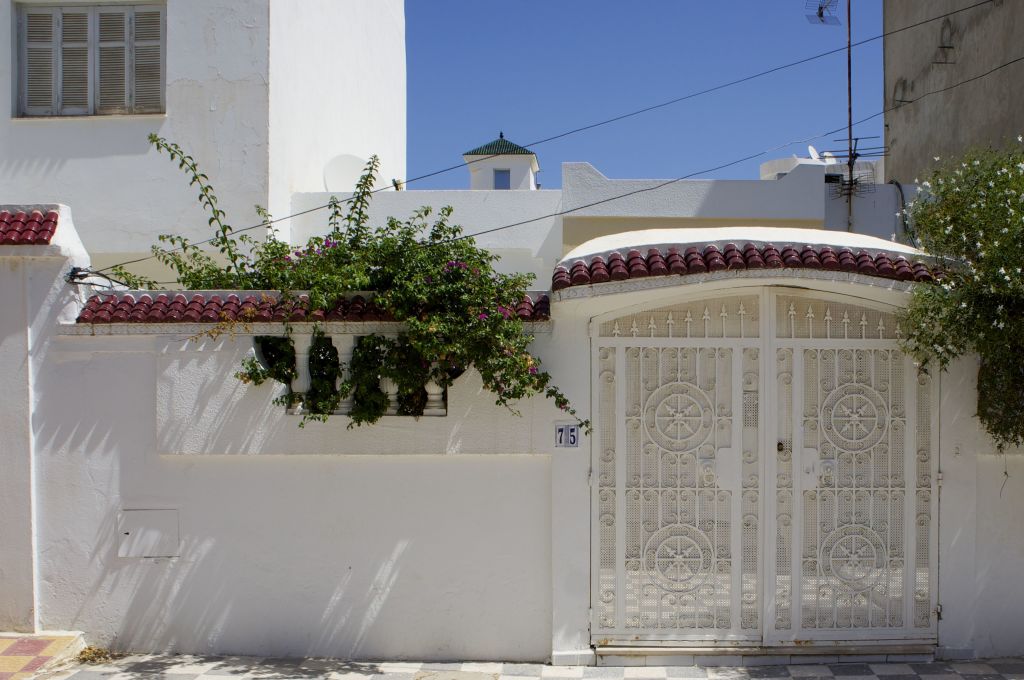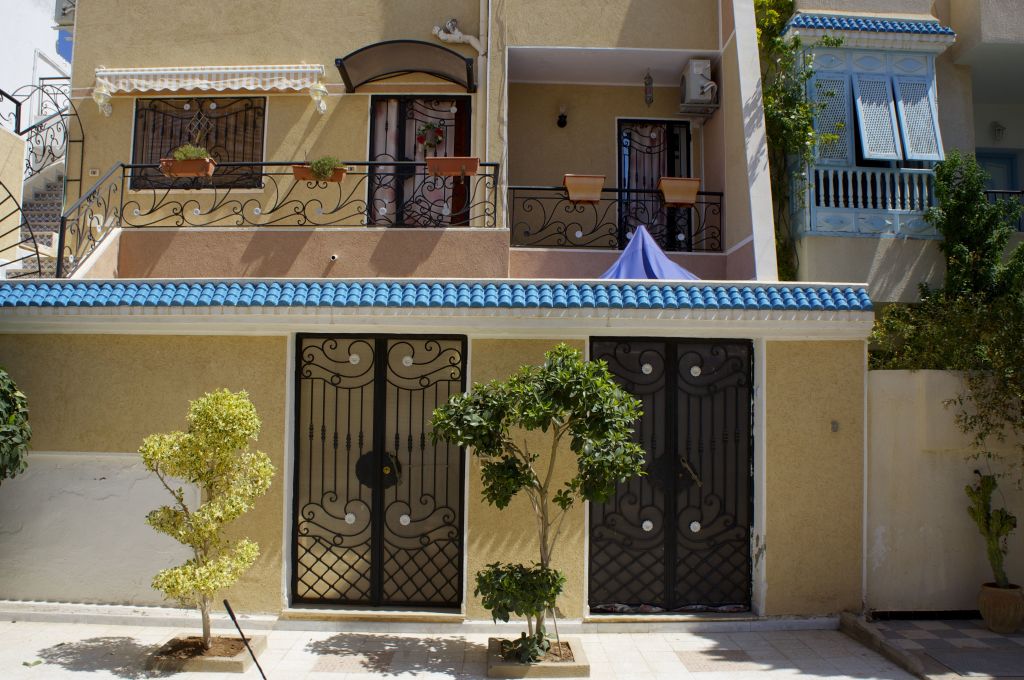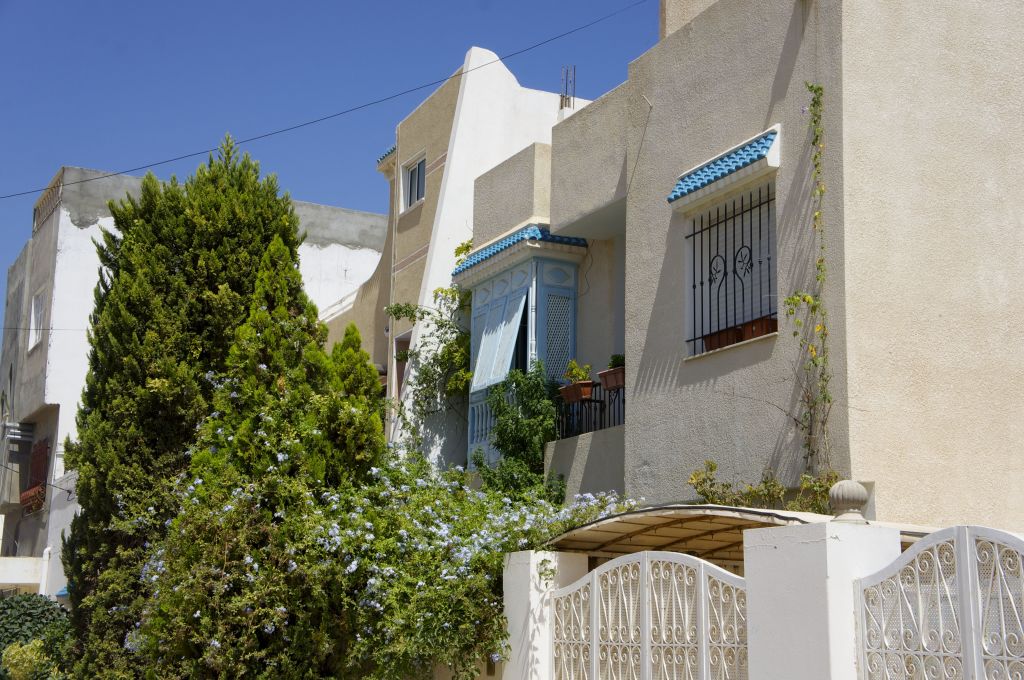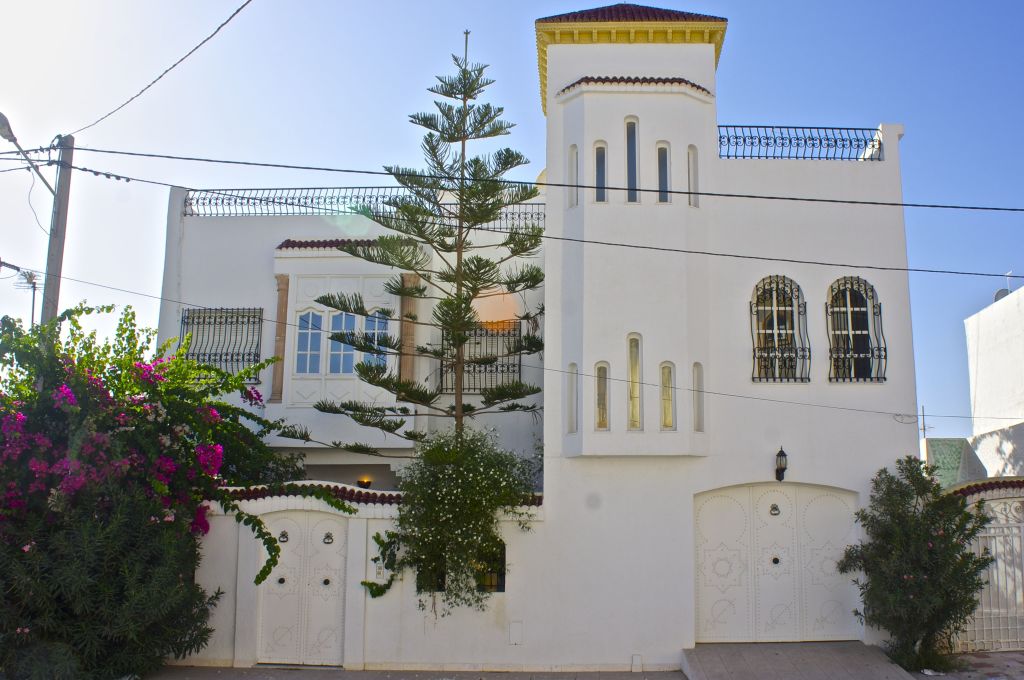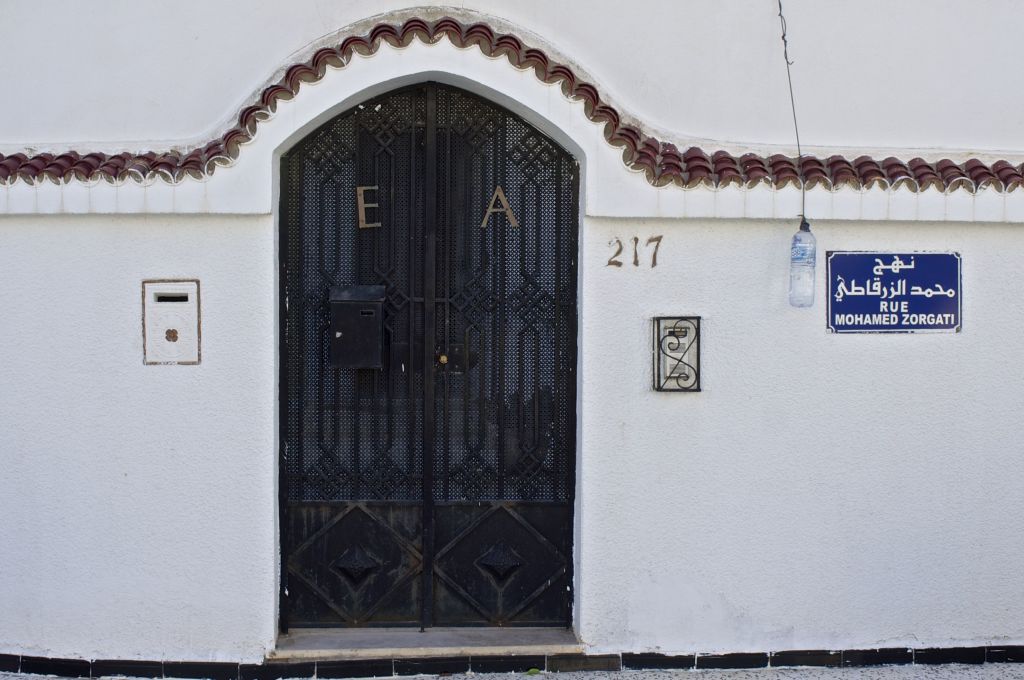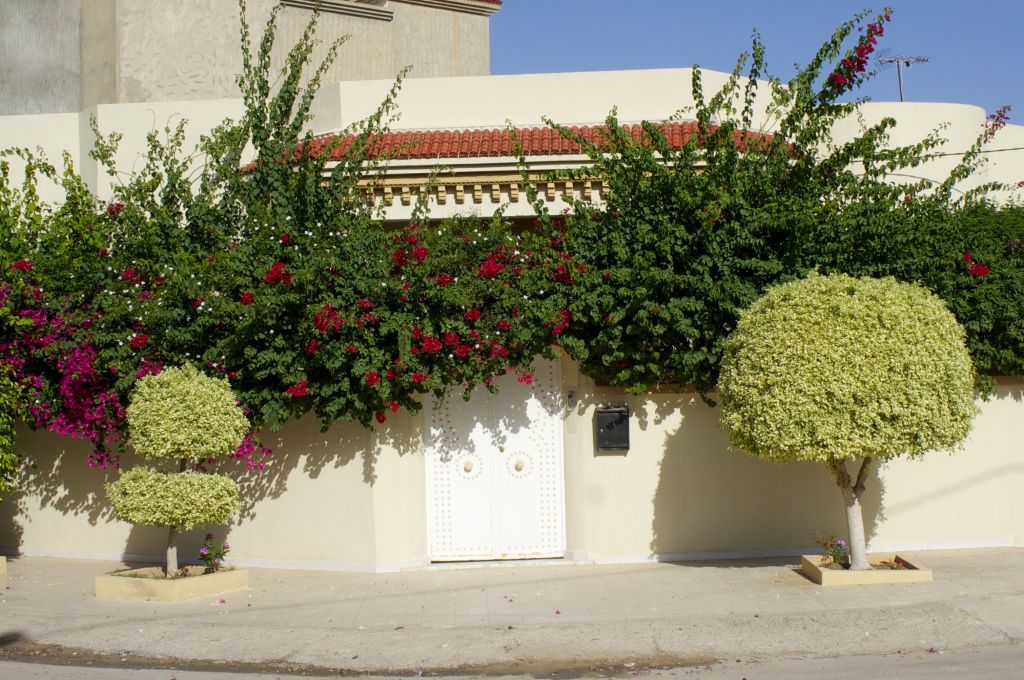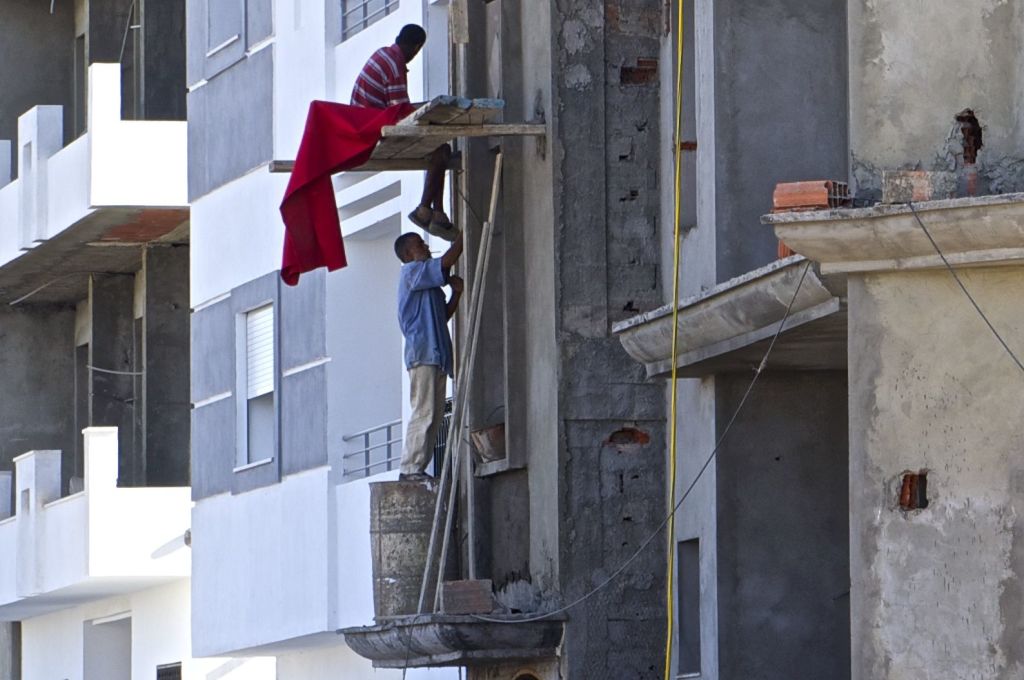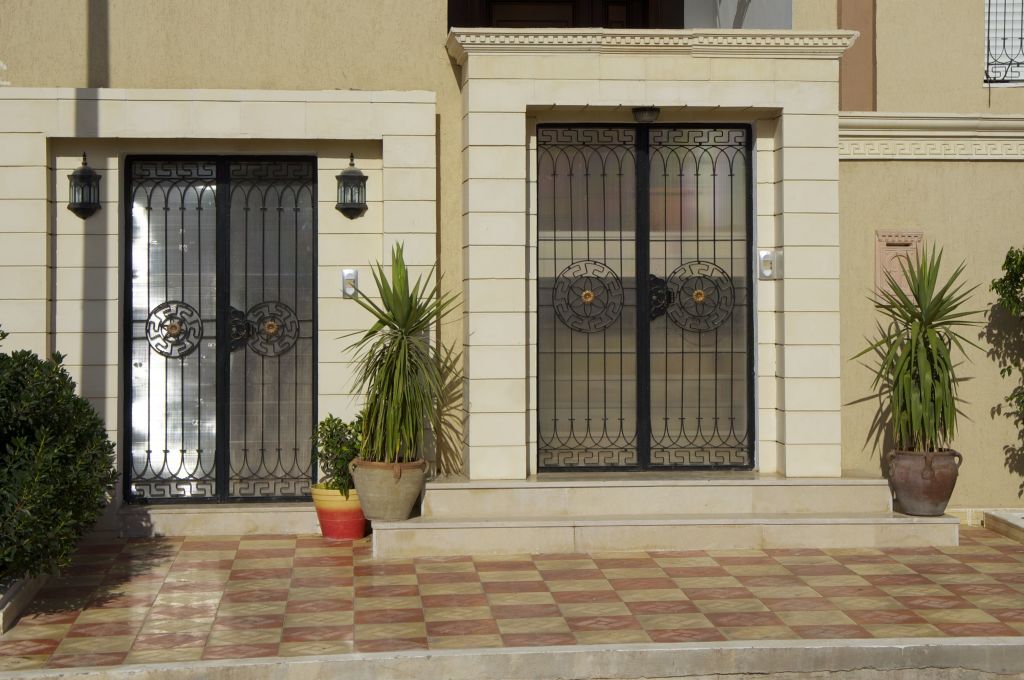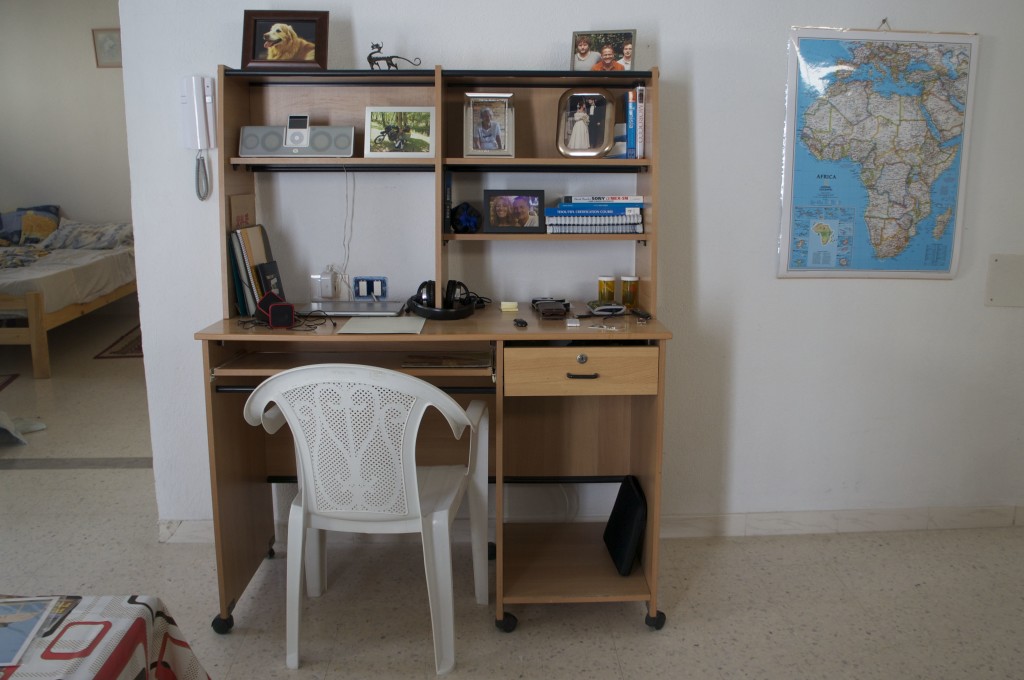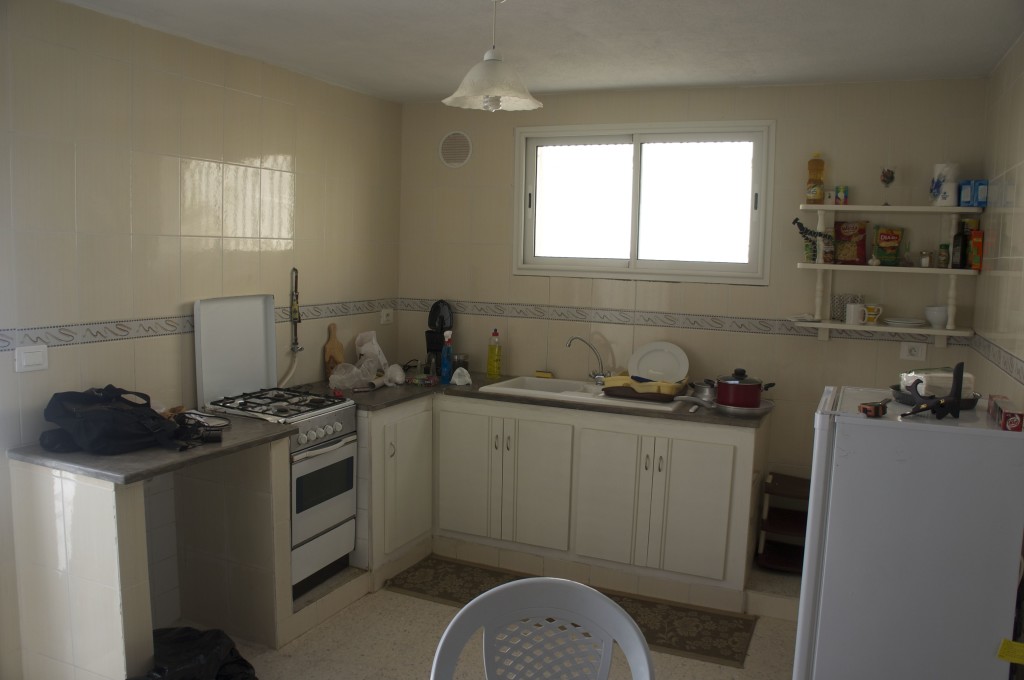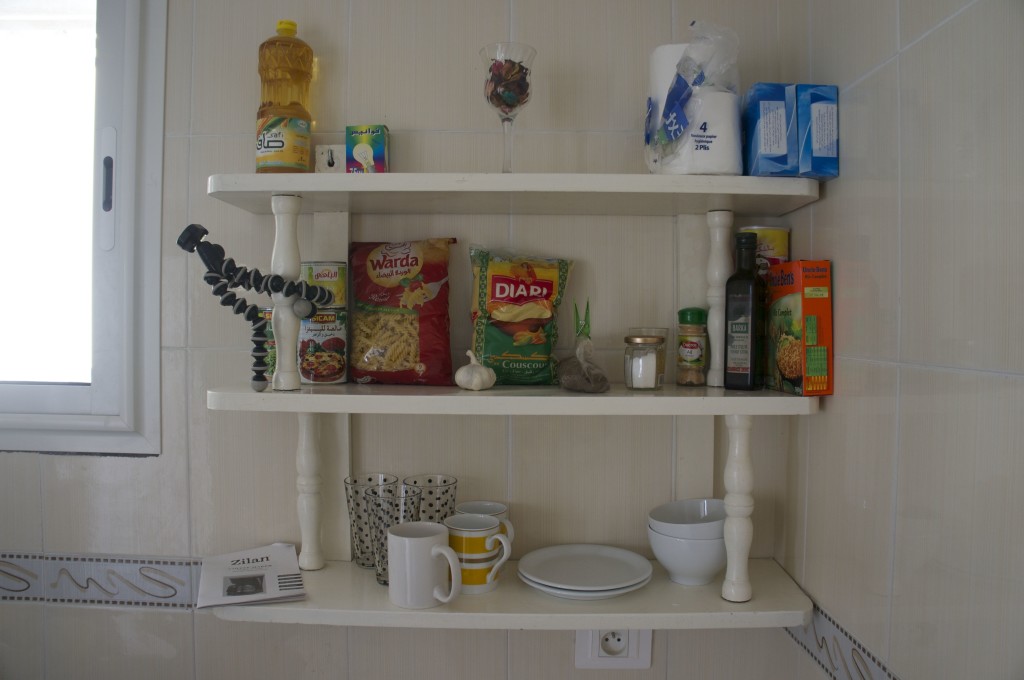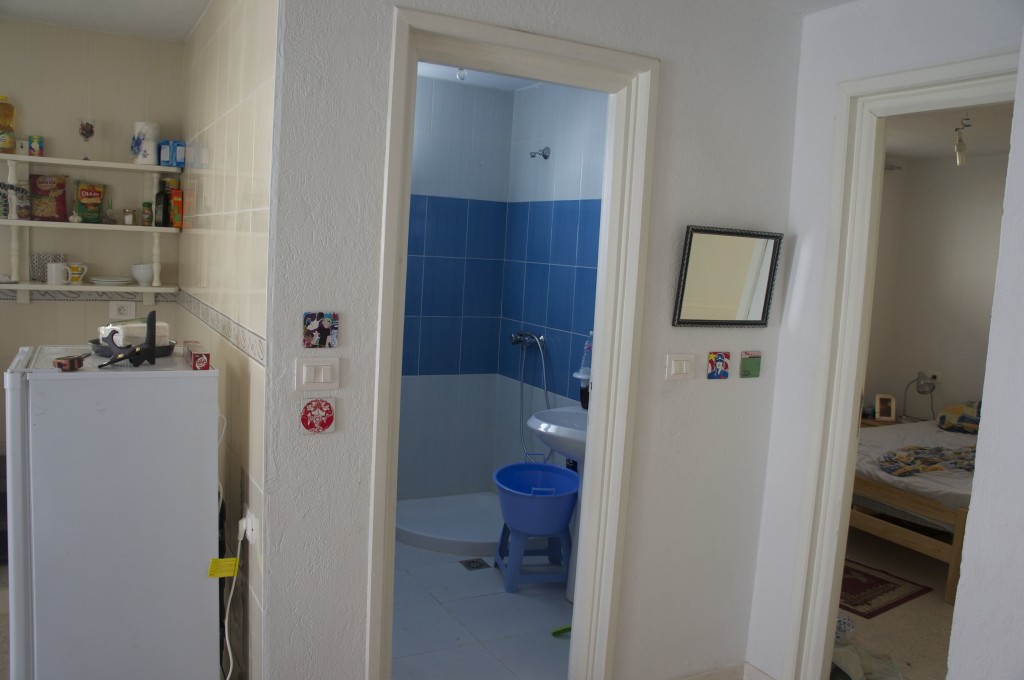After exploring El Jem’s Roman amphitheater and the town that surrounds it, we went to the archaeological museum. Roman mosaics excavated nearby constitute 95% of its exhibits. That single-mindedness works, since what the museum lacks in breadth it more than makes up for in breadth. Again I was struck by how long these pieces have endured and wondered what of our own culture will be exhibited two thousand years from now.
Archives for September 2014
El Jem: The Roman Amphitheater
In the second century CE, Tunisia was part of the African breadbasket of the Roman Empire. El Jem, in this pre-Arab world, was called Thysdrus and was something of a vacation spot for merchants who had gotten rich from the olive oil trade. As the wealthy are wont to do, they compelled the government to erect grand public works that would bring fame and prestige to their town. And so a Roman amphitheater with an audience capacity of between 30,000 and 43,000 was constructed in what even then was a small town, making it the Foxboro Stadium of its day. According to The Rough Guide to Tunisia, it is now “the single most impressive Roman monument in Africa.”
The tallest building in today’s El Jem is two stories tall. It’s therefore a jolt to walk around a corner and see the monumental ruins of the amphitheater. It makes me wonder whether any of the grand structures we build today will still be around in 1,800 years.
The amphitheater is still used for concerts and other performances, most notably the summertime International Festival of Symphonic Music. The festival recently closed for the season, but I hope to return for a concert next year; the amphitheater would be a spectacular place for an evening concert. The ruins have also been used as a location for various movies, including Monty Python’s Life of Brian.
My traveling companions were AMIDEAST’s fixer extraordinaire, Malek, and his friend Amine. The three of us paid our admission fee (as Tunisian nationals, they paid only 8 dinars while I had to pay 10) and began to explore.
The guidebooks I’ve consulted agree that the El Jem amphitheater is better preserved than the Colosseum in Rome. Not having been to Rome, except to change planes, I wouldn’t know. But it was amazing to see the hundreds of interior stone arches that are precisely fitted, as opposed to mortared, together.
According to local legend, the amphitheater was where Kahina, a Berber queen, led an heroic last stand against the Arab invaders in the seventh century. The structure was damaged again by war in the seventeenth century. Today it is a UNESCO World Heritage Site.
Below is some of the oldest graffiti I saw carved into the ruins. I searched for obscene Roman scrawls (maybe something like “Lavinia futui vult in asino”), but in vain.
There are tunnels running under the complex where wild animals were kept in cages, which could then be hoisted up to the stage so that the crowds could enjoy the spectacle of watching them tear each other (or hapless people) apart. The wildlife present now is considerably tamer.
Day Trip to El Jem
I took advantage of a day off to go to El Jem, a town about an hour south of Sousse by train. The main attraction there is a very well preserved Roman amphitheater from the third century BCE. But the surprise for me was the town around the ruins, a small settlement with nice cafes and antique shops. It looked like this:
I was here:
My New Neighborhood
I live in one of the newer parts of Sousse, a residential area that’s still largely under construction. The houses have clean, spare lines and are well-proportioned. In keeping with the building style and security needs of this and many other parts of the world, walls surround most of the houses. I have mixed feelings about those walls; they provide additional safety to people in their private spaces, but they make the public streets feel less safe. Still, I like the architecture of the place very much. I love walking to work and passing by these elegant buildings.
Moving Into My Sousse Apartment
One consequence of being robbed on the train from Tunis to Sousse last month was a scaling back of my plans for housing. I’d hoped to get a nice new seaside apartment, or maybe something in the medina, but it was not to be. Instead, I opted for a small one-bedroom apartment in the basement of a new house that’s just a ten minute walk to AMIDEAST.
Maybe this will be for the best. The rent is certainly lower than the places I’d been looking at, and the easy walk to work will save me money on taxi and louage fares.
I moved in on Monday and started rearranging, cleaning, shopping, and personalizing my flat.
It’s essentially one medium-sized living/dining/cooking area, a nice bathroom, and a smallish bedroom.
It’s very much a work in progress. I hope to have it looking better eventually. But for now, I am just happy to have a home.


